A visit to Rome is definitely incredibly rewarding, and you’ll come away with treasured memories of your tour of the Colosseum and the Roman Forum, taking in the views from the dome of Saint Peter’s, and gazing up in awe at the ceiling of the Sistine Chapel in the Vatican Museums.
But a Rome itinerary can definitely dent your pocketbook some, especially if your itinerary includes the top experiences in Rome.
Rome is one of the great centers of art and architecture, so a lot of the sightseeing in Rome is tied to its world-famous monuments and musuems.
With long lines at main sights, you’ll want to book skip-the-line admissions or guided tours to conserve precious time.
But if you are traveling on a budget, take heart! There are so many rewarding FREE things to do in Rome that you can have a very productive visit without breaking the bank.
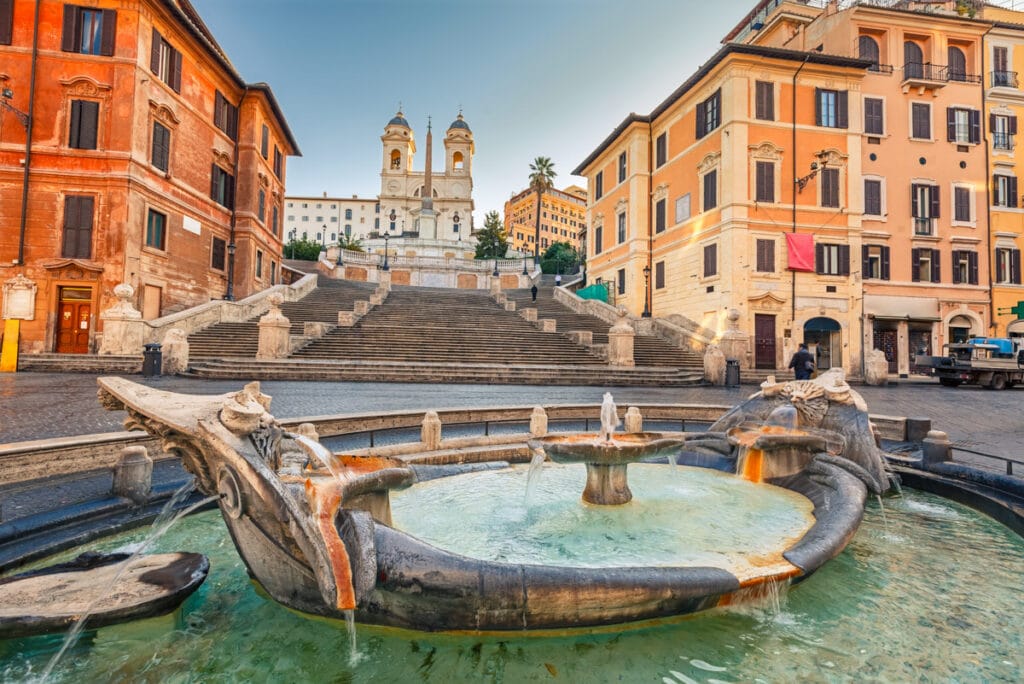
Some links on this page may be affiliate links. If you click an affiliate link and make a purchase, we may receive a small commission, at no extra cost to you. For more details, refer to our disclosure.
And you should visit Rome even if you are not a history or art enthusiast, because the city is a great experience in itself. Vibrant, lively, and always entertaining, Rome will enthrall you, no matter what you seek as a traveler.
In looking back upon our time in Rome, I realize that some of my most treasured memories of the Eternal City are associated with activities that are free.
We did pay for several must-sees, including a guided tour of the Colosseum, tickets to the Borghese Gallery (our favorite museum in Rome), a tour of the Vatican Museums, and the climb up to the top of the dome of St. Peter’s.
But for the most part, we enjoyed many treasures in Rome without having to spend on entrance fees.
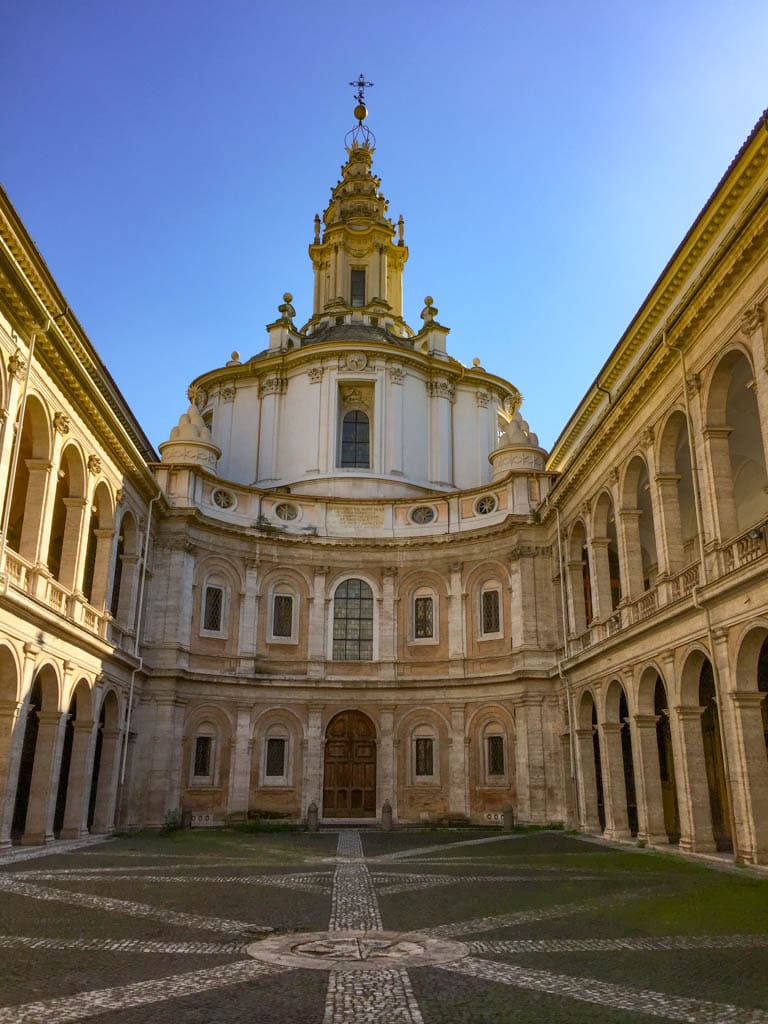
And while we enjoyed visiting the iconic Pantheon for free on our first visit to Rome, it’s no longer a free Rome attraction.
Read on to discover the BEST free things to do in Rome!
Free Things to Do in Rome
1. Stroll the Streets of Trastevere
One of the most charming neighborhoods in Rome, Trastevere is located near the Vatican, across the Tiber River from the historic center of Rome.
With its mellow yellow and faded orange facades, cobblestoned alleys, lovely plazas, and old churches, Trastevere is a joy to wander. Take in the pretty balconies bedecked with flower pots, and admire the gorgeous doors.
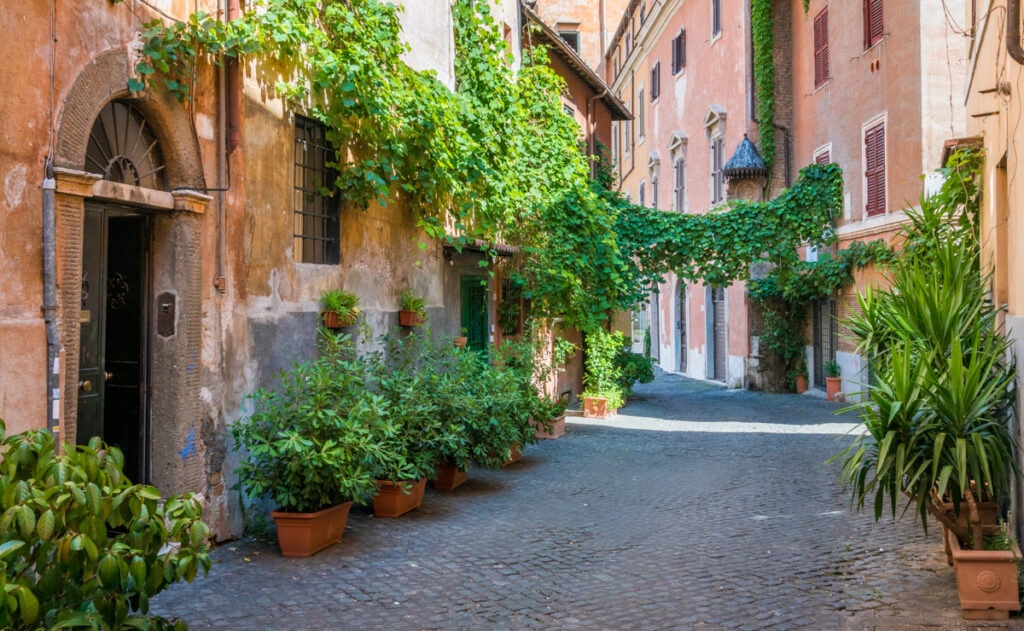
You’ll be snapping photos every few steps as you stroll Trastevere!
And if you feel you need to rest for a bit, pick an outside table at one of the many cafes and watch the world go by as you sip your drink. In Trastevere, although you’ll see tourists, you’ll also see locals going about their day, much like in the outer districts of Venice.
In the evenings, the area is much livelier, with visitors piling into Trastevere to dine at the many quality eateries and drink at the many bars. Enjoy the many street performers as you walk here in the evening.
The Piazza di Santa Maria in Trastevere is the heart of the neighborhood. The fountain here is beautiful! If it’s open when you visit, be sure to step inside the Basilica di Santa Maria, one of Rome’s oldest churches.
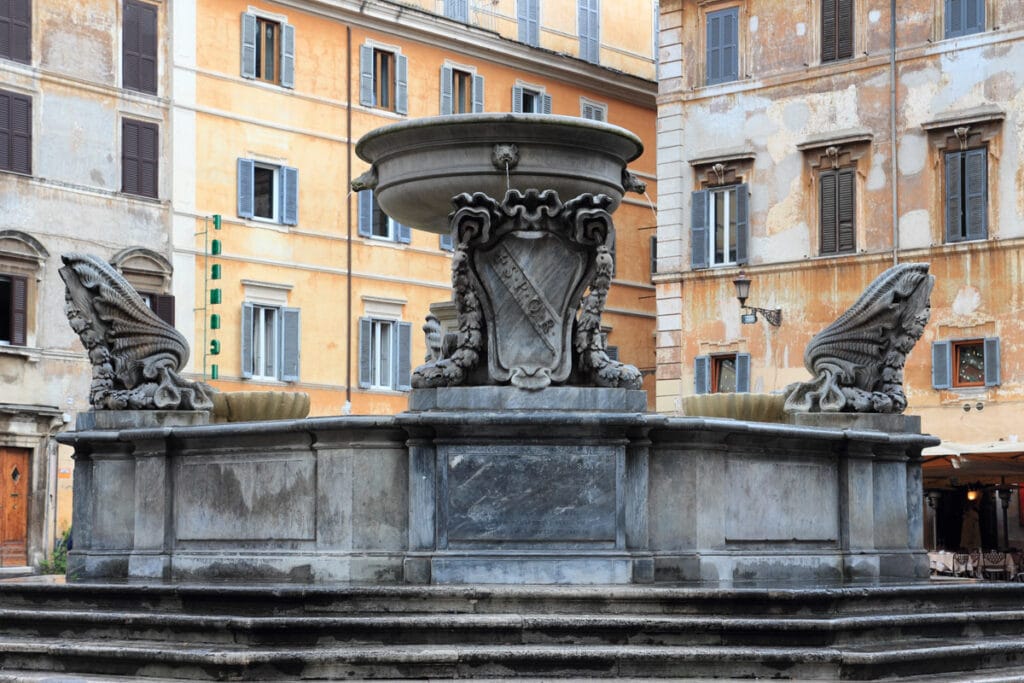
Another beautiful church you must visit in Trastevere is the Basilica di Santa Cecilia, also a very old church.
Of course it’s totally free to wander Trastevere, but if you are a foodie, you will want to take a food tour in Trastevere!
2. Admire the BASILICA DI SAN PIETRO IN VATICAN CITY
One of the most visited churches in the world, the Basilica di San Pietro in Vatican City definitely ranks up there as one of the top free attractions in Rome.
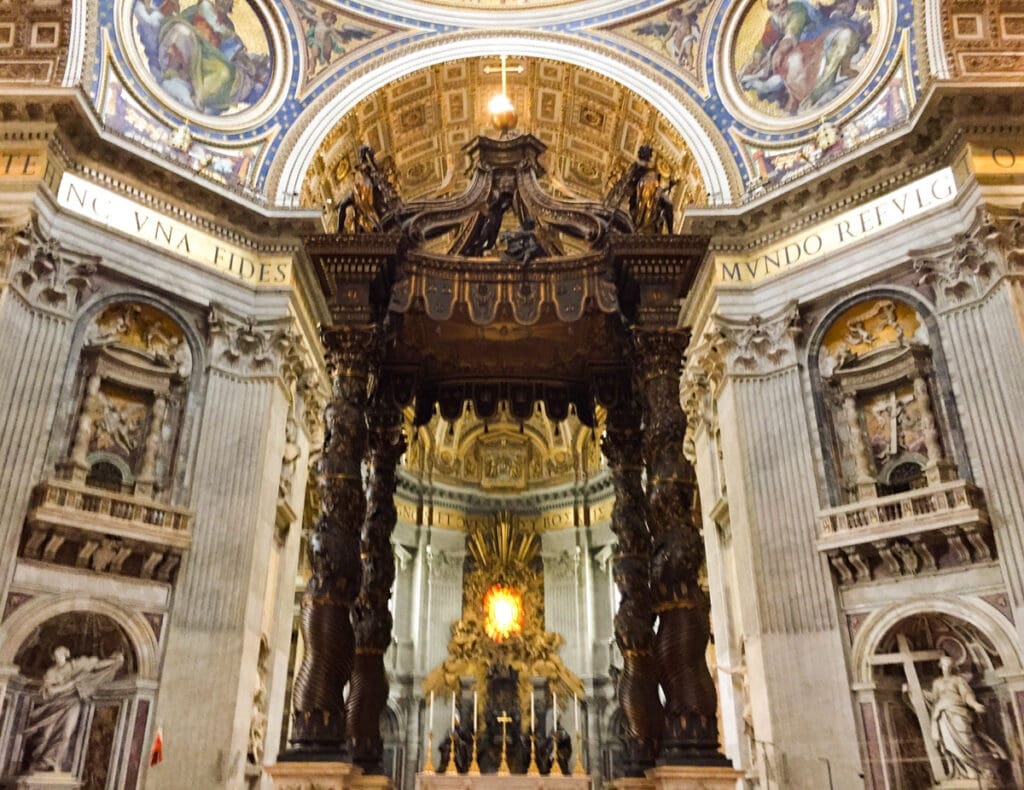
The only downside to not visiting as part of a skip-the-line guided tour is that you may have to wait in line to enter (and sometimes for hours).
Arrive early, before opening time, or late in the afternoon, towards closing time for shorter wait times.
But trust us, whether your wait is long or short, you will agree it’s well worth it when you see the fabulous interior.
Look up at the stunning dome from the inside.
Gaze in awe at Bernini’s huge bronze baldacchino. It is close to 92 feet tall and sits above the tomb of St. Peter.
Admire Michelangelo’s Pietà. Michelangelo was only in his early twenties when he created this masterpiece. Isn’t it amazing that at such a young age he was able to make marble come to life so beautifully?
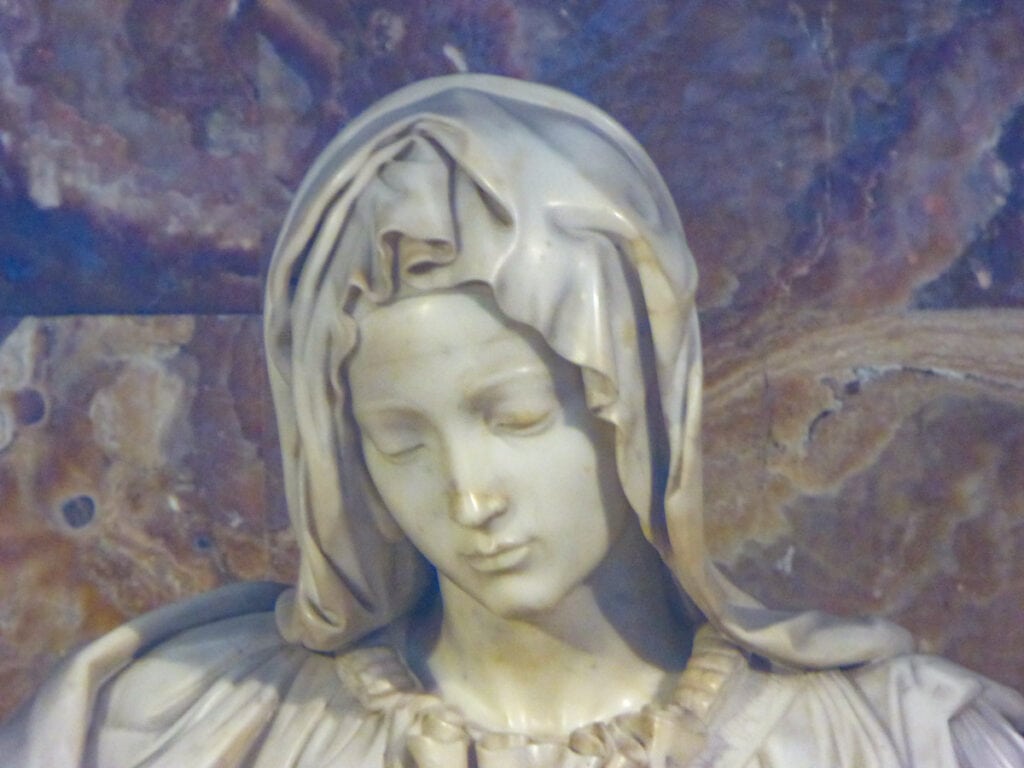
This is the only work Michelangelo ever signed, apparently after learning that visitors were attributing the work to a competitor.
Look for the statue of Saint Peter along the main nave, on the right. Reportedly the work of Arnolfo di Cambio, the bronze statue has a right foot that’s worn out from pilgrims kissing it in devotion.
At the time of writing, the Basilica di San Pietro is open from 7 a.m. until 7 p.m. from April through September and 7 a.m. until 6.30 p.m. from October through March.
If the Pope is in town, a papal audience usually occurs on Wednesday mornings, and the Basilica is closed during that time.
Make sure you are appropriately attired, with covered shoulders and knees, or you will be turned away.
And the cupola is not free, so if you want to climb to the top of the dome for the stunning views over Rome, you have to pay a fee or splurge on a guided tour.
3. Enjoy the gardens at the Villa Borghese
At close to 200 acres, the gardens of the Villa Borghese are one of the largest green spaces in the heart of Rome.
We love interspersing intense sightseeing (museums, palaces, and the like) with strolls through gardens, and we loved exploring the Villa Borghese Gardens after our visit to the Borghese Gallery.
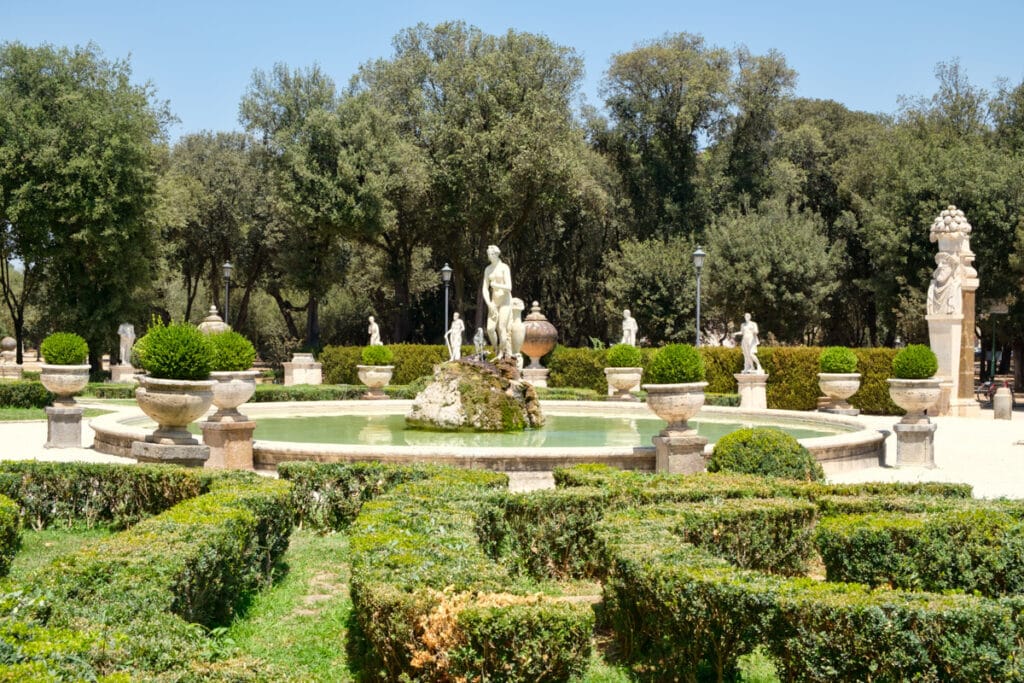
While the gallery has an entrance fee, the gardens are absolutely free to stroll.
Spread out on the Pincian Hill, the gardens were established by Cardinal Scipione Borghese in the early 17th century. The gardens were later redesigned in the English park style and opened to the public in the early 20th century.
The park houses several buildings as well as many beautiful fountains and statuary.
The Villa Borghese pond, called the Laghetto di Villa Borghese, features an island on which is built the lovely Temple of Aesculapius.
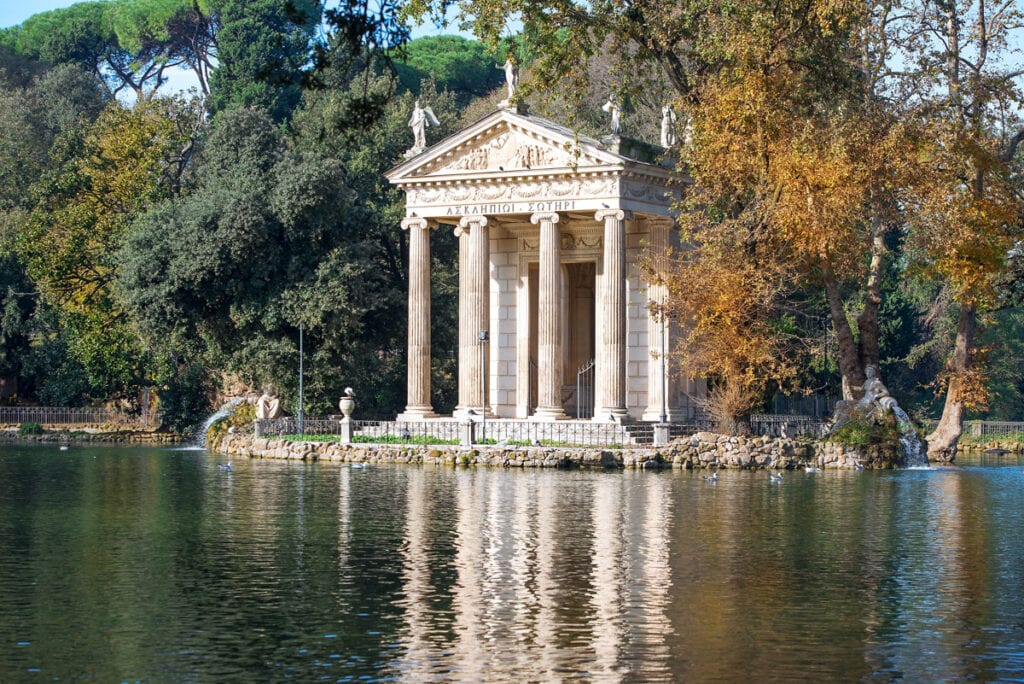
Be sure to visit the Pincio Terrace for views over the historic Piazza del Popolo and beyond. And don’t miss the Water Clock, designed by Gian Battista Embriaco in the late 1800s.
The gardens are open everyday from dawn until dusk.
4. Do a walking tour of the heart of Rome (by day)
The historic center of Rome is a UNESCO World Heritage Site, and you do not even have to enter a single monument or museum to appreciate the centuries of history.
Aside from the many Baroque and Renaissance monuments, the centro storico features lovely facades, fountains, cobblestone alleys, and pretty piazzas.
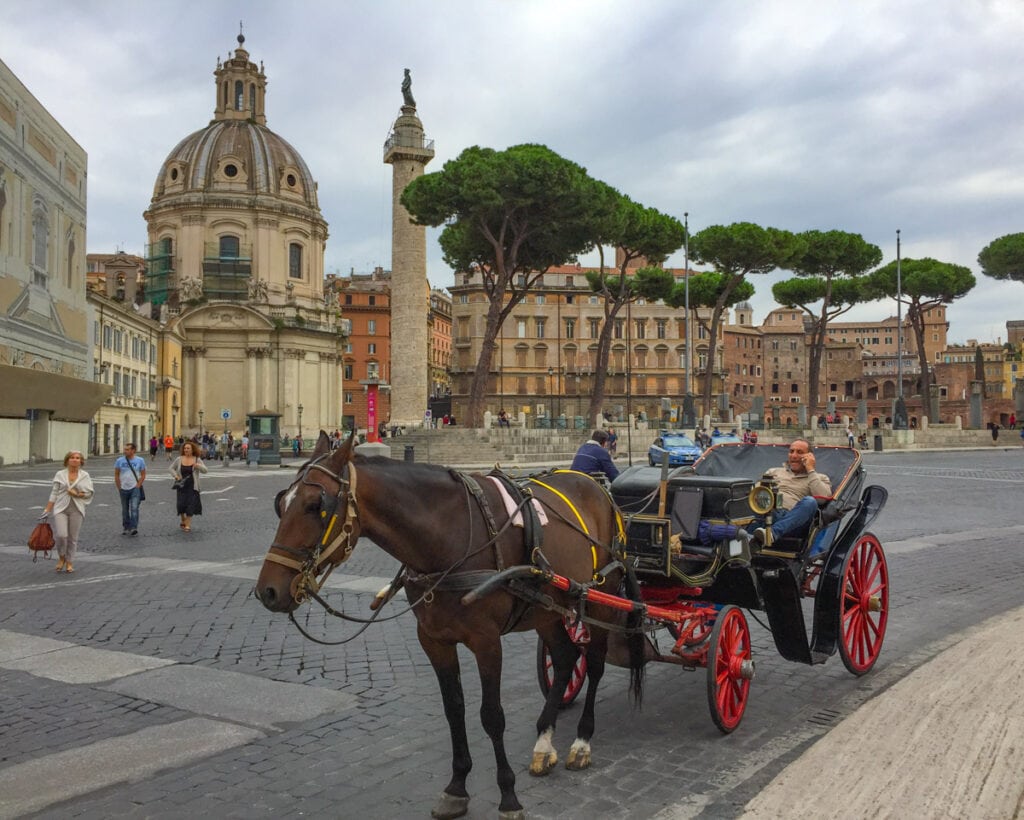
The route stretches between the Piazza del Popolo and the Colosseum, and you can walk the route in either direction. We like to enjoy the Colosseum as the grand finale of our walk!
Starting at the Piazza del Popolo, highlights along the route include the Spanish Steps, the Trevi Fountain, the Column of Marcus Aurelius, Piazza Navona, the Pantheon, and the Vittorio Emmanuel II Monument.
Stroll along the Via dei Fori Imperiali, with the Colonna Trianna and the remnants of the Foro Traiana on one side and the ruins of the Foro Romano on the other, before reaching the Colosseum.
If you want to snap photos and enjoy a modicum of solitude on your walk, do it very early in the day, at around sunrise. It’s an amazing time to enjoy the city.
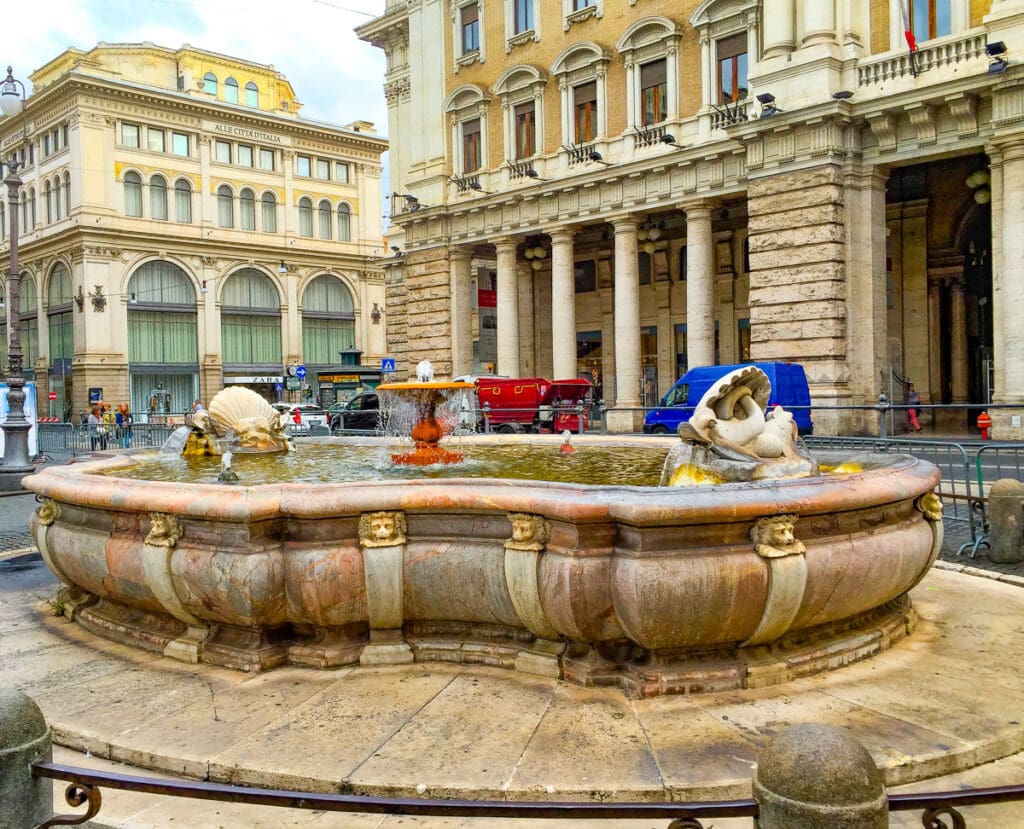
If you love to feel the throbbing pulse of the city, you can walk the historic core of Rome any time during the day, when throngs of people crowd the piazzas and the streets.
Since you walk some of this route anyway as you go about your sightseeing day, we love to do the dedicated stroll early in the day to enjoy the relative quiet.
5. enjoy the illuminated monuments on an after-dark walk
On our first visit to Rome, one evening my husband and I had an early dinner and then did a leisurely walking tour of all the sights along the stretch from the Spanish Steps to the Colosseum, including the Trevi Fountain, Piazza Navona, the Pantheon, the Fori Romano, the Fori Traiano, the Vittorio Emanuele II Monument, and the Colosseum.
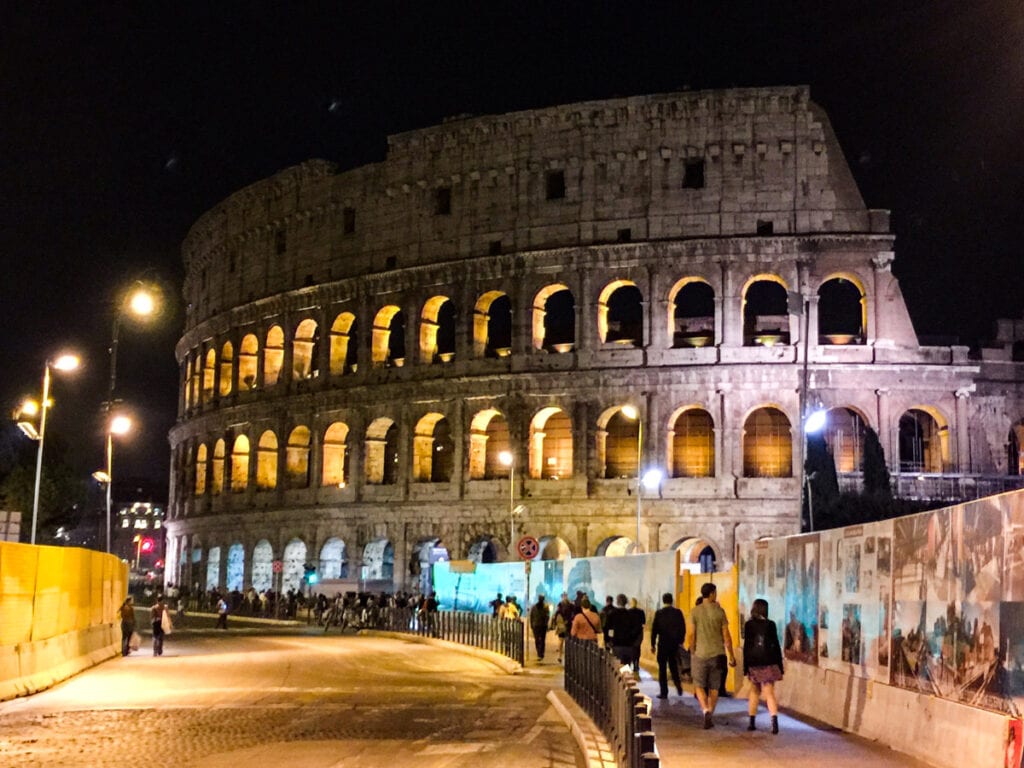
The lit-up fountains look beautiful at night, as do the ancient monuments. It’s whole new perspective on what you saw during the day.
From the Piazza Navona, do a short detour. Walk over to the River Tiber at the Ponte Sant’Angelo to view Castel Sant’Angelo, which looks stunning at night.
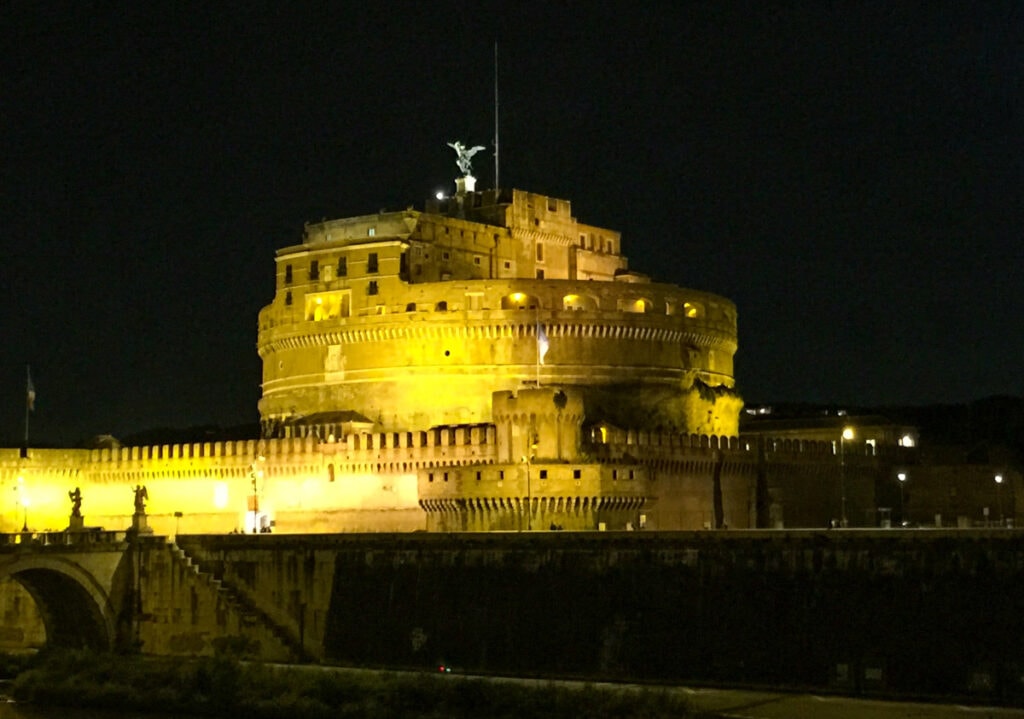
Then walk across the Ponte Sant’Angelo, stopping to admire Bernini’s beautiful angel statues.
The view of the lit up dome of St. Peter’s from this bridge is quintessential Rome: it’s a memory that I will carry with me forever.
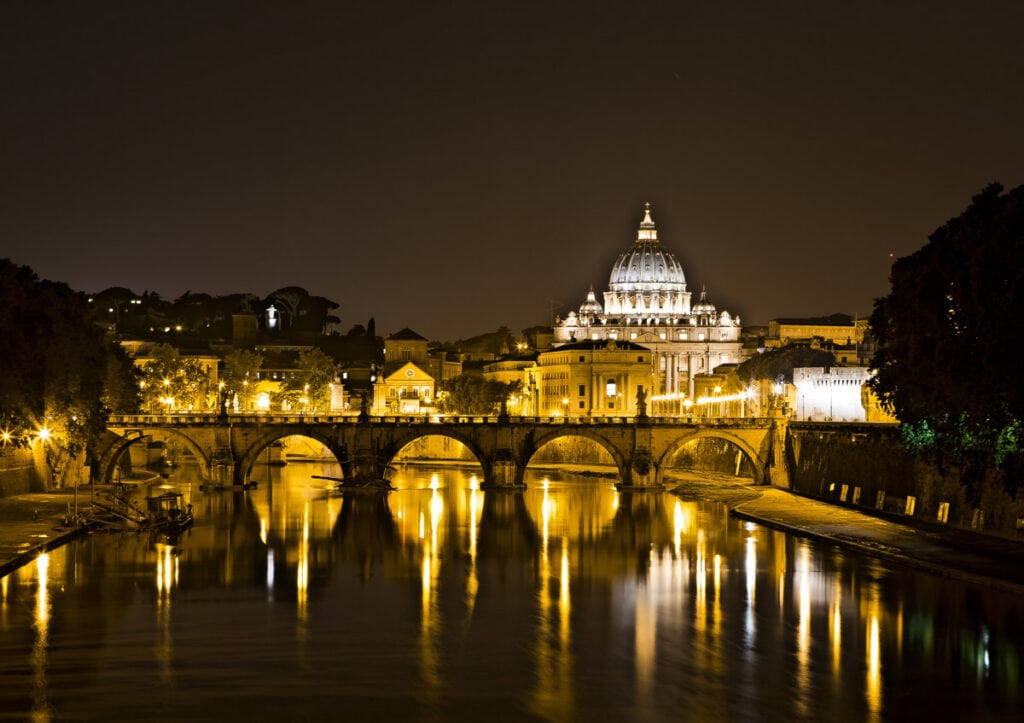
As my husband said after our night stroll, our day walk was to discover, learn, and appreciate with the mind, but the night tour was pure bliss for the heart and soul.
Tip: It takes longer than you think to do the whole tour so allow for two to three hours and carry water and a little snack. We felt perfectly safe walking around these sights at night: there were still lots of people everywhere.
6. Pose for a photo on the Spanish Steps
Located in the heart of the historic center of Rome, the Spanish Steps are a hugely popular photo spot and meeting place.
You may recall them from the famous scene in Roman Holiday!
Built between 1723 and 1725, the picturesque steps connect the Piazza di Spagna at the bottom with the Piazza Trinità dei Monti at the top. There are 135 steps.
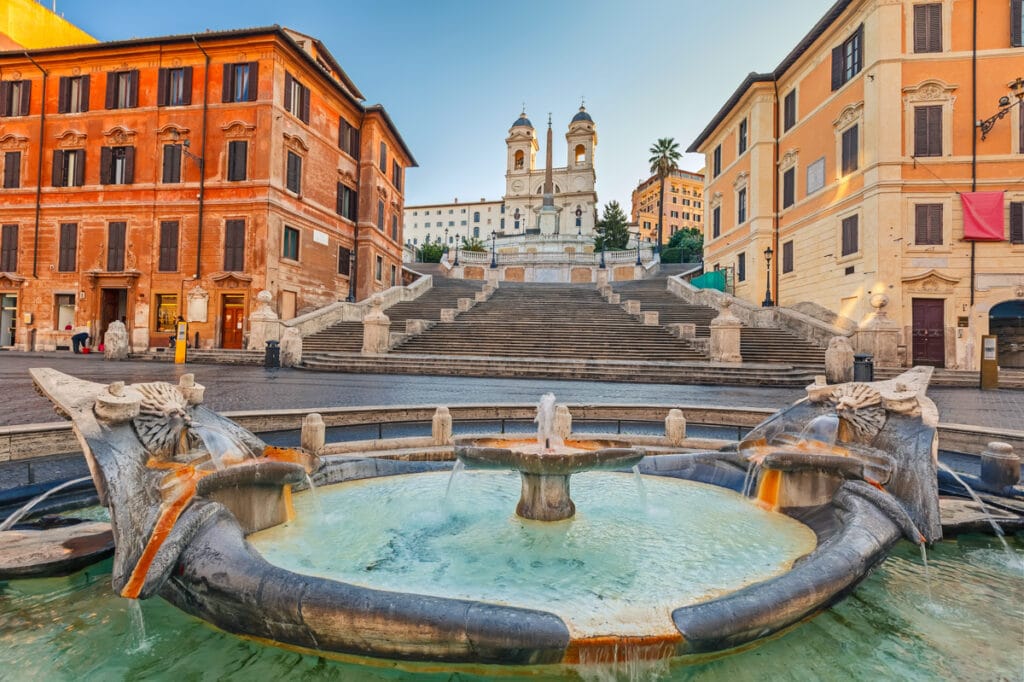
At the top of the steps is the regal church of the Santissima Trinità dei Monti with its famous twin towers. Step inside to view the impressive murals.
At the bottom, in the Piazza di Spagna, is the Fontana della Barcaccia, a historic fountain created in the Early Baroque style. It is said to have been made by Pietro Bernini, father of the famous Baroque sculptor and architect Gian Lorenzo Bernini.
Once a year, on Rome’s anniversary, the steps are decorated with colorful azaleas.
The Spanish Steps are extremely crowded during the day and into the evening, especially in season. To appreciate their beauty in relative quiet, visit late at night or very early in the morning.
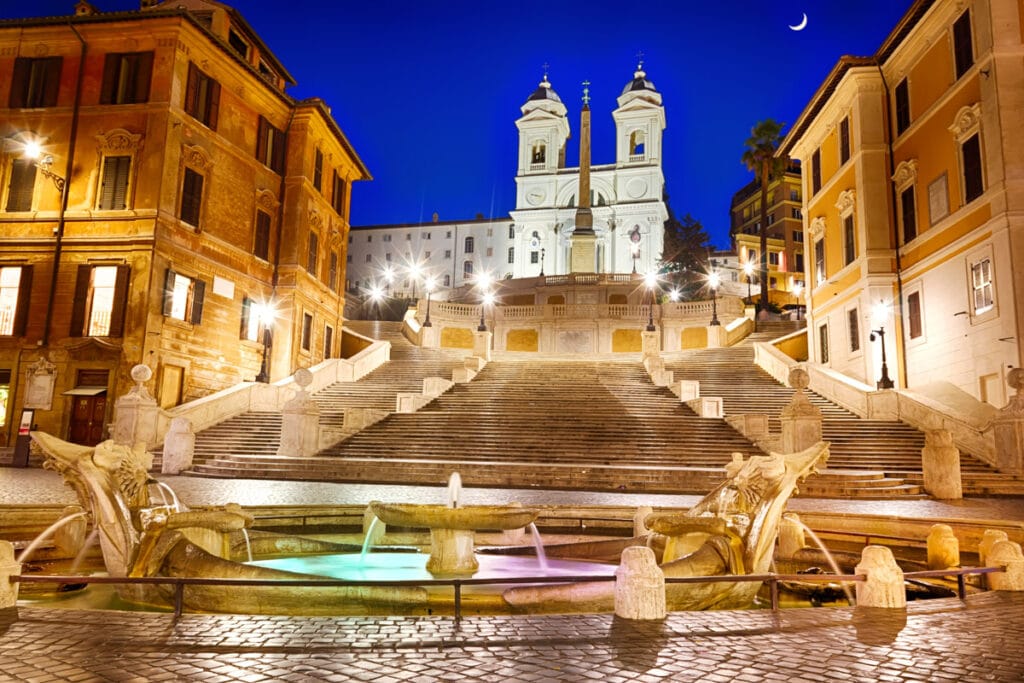
Of course you can also visit during the day to enjoy the lively ambience!
Good to know: Sitting on the Spanish Steps, or eating and drinking here, is no longer allowed. The fine is hefty if you are caught!
7. Admire the impressive Trevi Fountain
The Trevi Fountain is the most impressive monumental fountain in Rome, and one its most recognizable landmarks.
Indeed, it is one of the most famous fountains in the world.
Located at the intersection of three roads in Rome’s historic center, the Baroque Fontana de Trevi was designed by Nicola Salvi and completed in 1762.
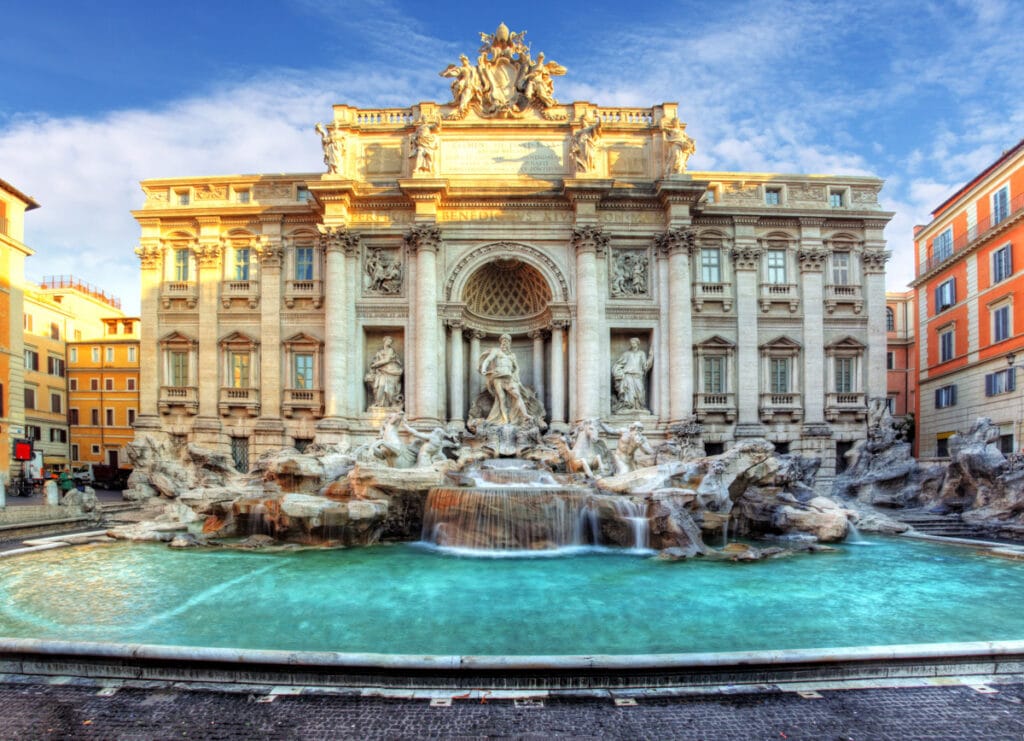
It is largely made of travertine, quarried in nearby Tivoli. The water comes from Acqua Vergine, one of the aqueducts that used to provide water to the city.
The Trevi Fountain features the shell-shaped chariot of Oceanus, pulled by winged horses that are guided by Tritons. Flanking Oceanus are two other statues: Abundance and Health.
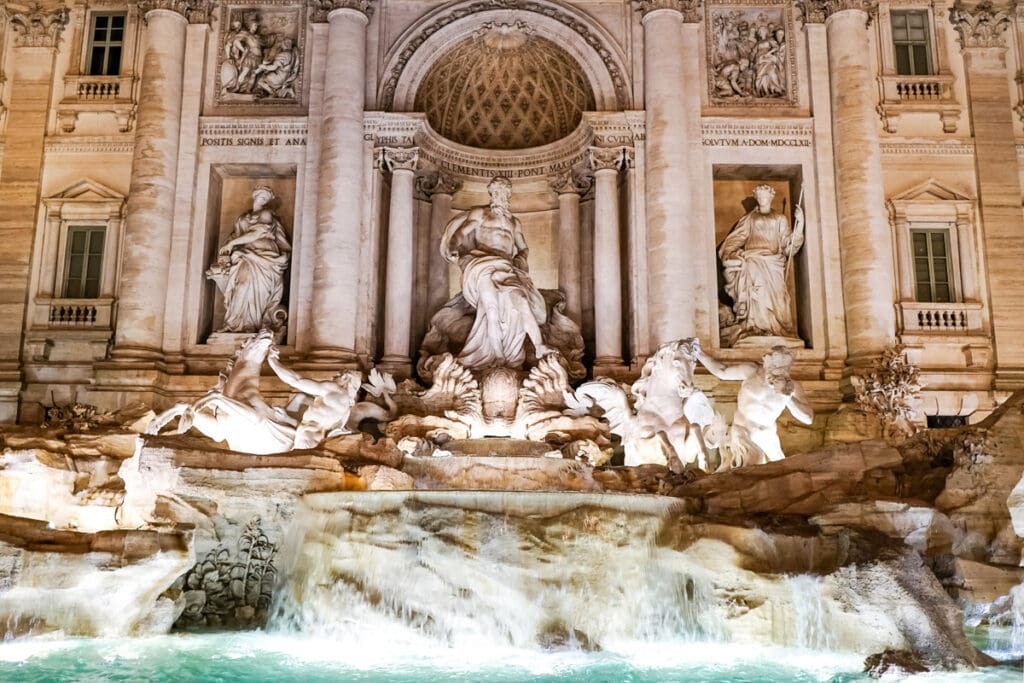
The fountain is free to visit, but if you want to return to the Eternal City, you may want to face away from it, and, using your right hand, toss a coin over your left shoulder into the fountain!
As with other landmarks in Rome, the Trevi Fountain can be elbow-room only during the day in season.
Visit very early in the day to appreciate its scale and beauty in relative solitude!
8. Enjoy the street performers on Via del Corso
Our rental apartment in Rome was just off the Via del Corso near the Piazza del Popolo.
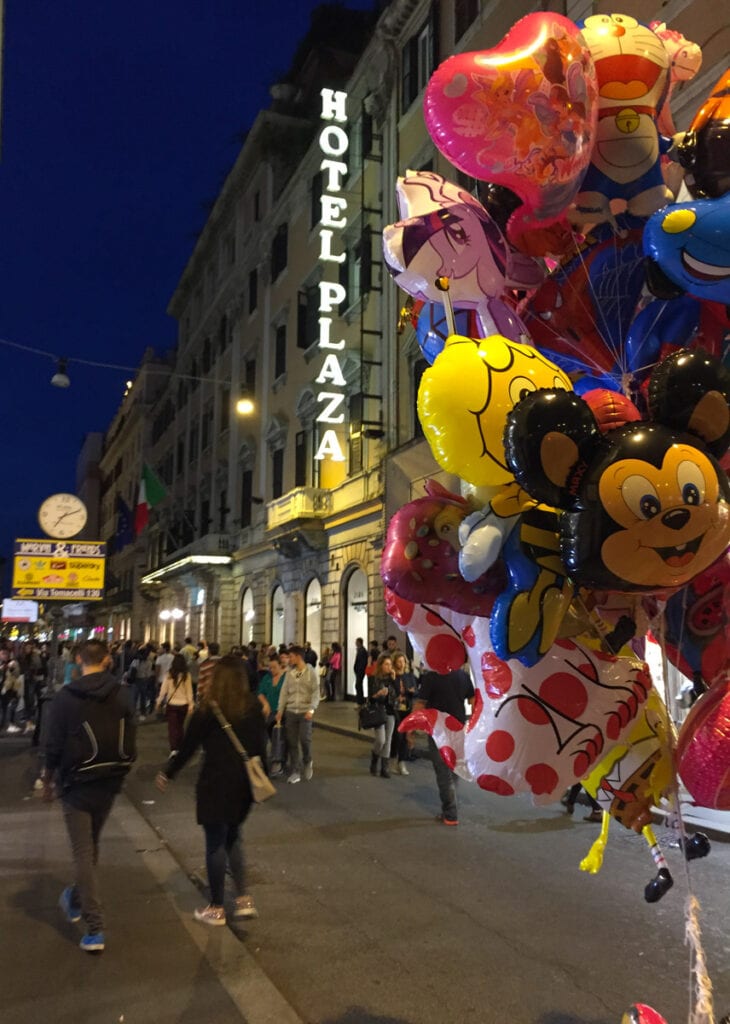
The only time we saw this street almost deserted was at 5 a.m., on the morning we left Rome!
Many major sights are right off this main drag. It’s also a favorite street for locals to take their passeggiata. And finally, it’s a major shopping destination as well.
So it’s always abuzz (and that is an understatement!) with throngs and throngs of people.
To add to the merriment, there are street performers, sidewalk artists, and walking vendors all trying to ply their craft or trade on this street.
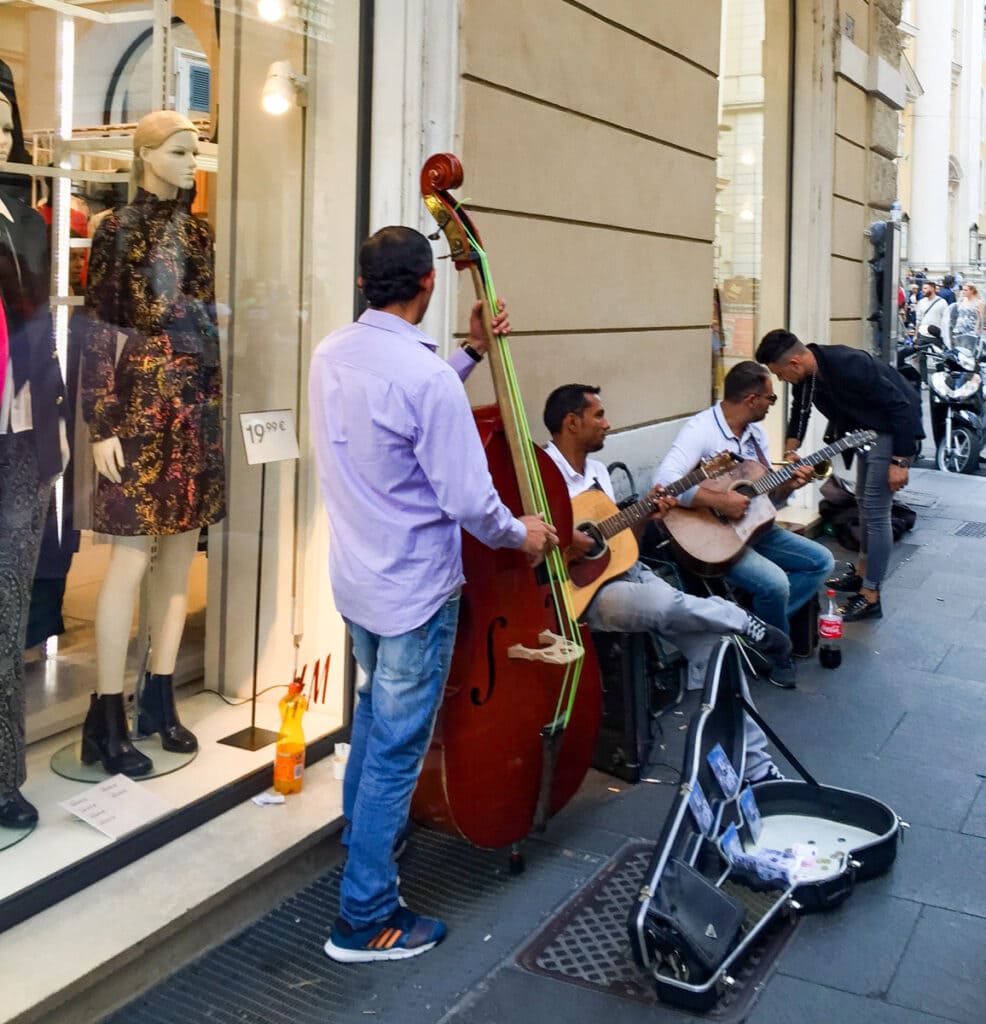
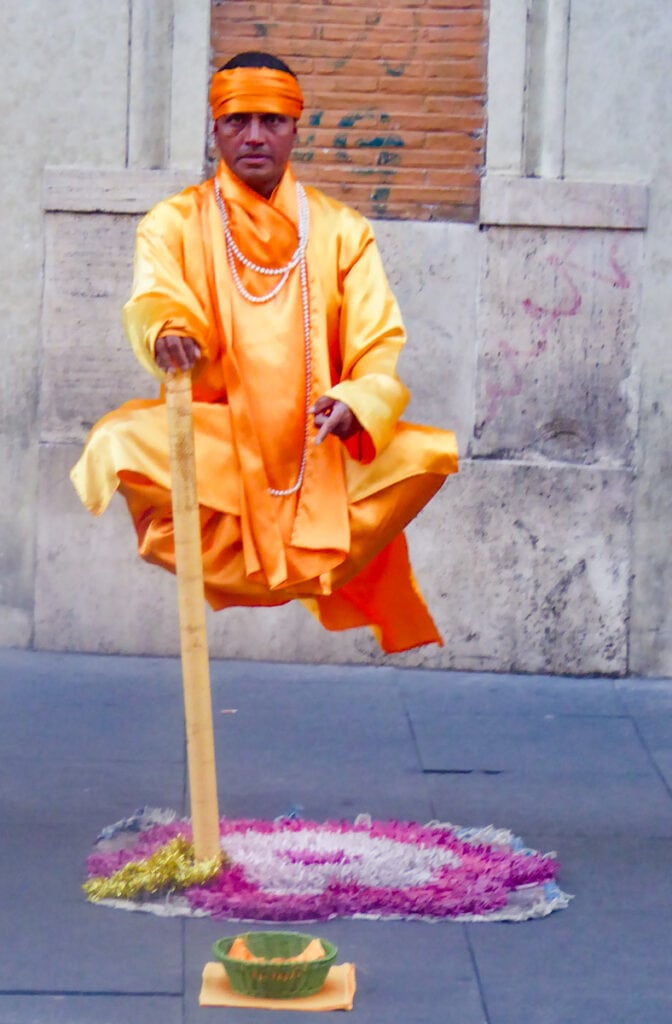
Walking up and down Via del Corso was a daily source of immense entertainment for us on our first visit to Rome.
If we were not constrained by time, I would have happily sat at an outside table at a cafe along this street all day, watching Rome happen all around me.
Tip: If you want to make your stroll even more enjoyable, pop in for some gelato artigianale at Fatamorgana, just off Via del Corso between the Piazza del Popoli and the Spanish Steps. It’s some of the best gelato you’ll find in Rome!
9. Enjoy people watching at Piazza Navona…
Piazza Navona is one of the coolest places to hang out in Rome’s historic center.
It is a large plaza, built where the Stadium of Domitian once stood, and is home to many gawkworthy fountains and monuments.
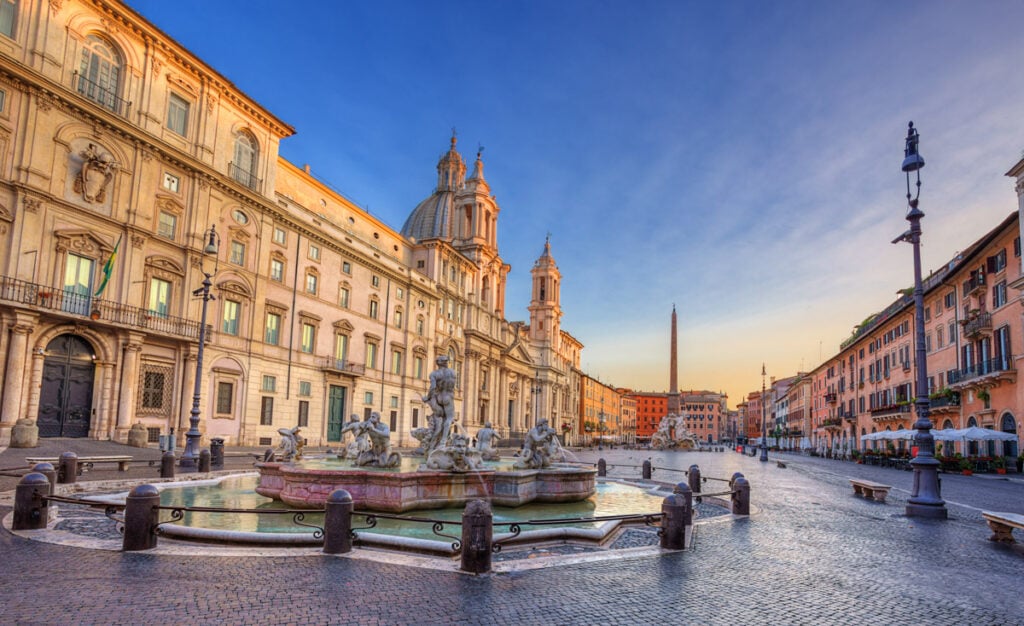
Once the scene of medieval races and games, and then the home of Rome’s main market, the plaza was eventually redesigned as a jewel of Baroque architecture.
In the center of the plaza stands the magnificent Fountain of the Four Rivers, designed by Gian Lorenzo Bernini.
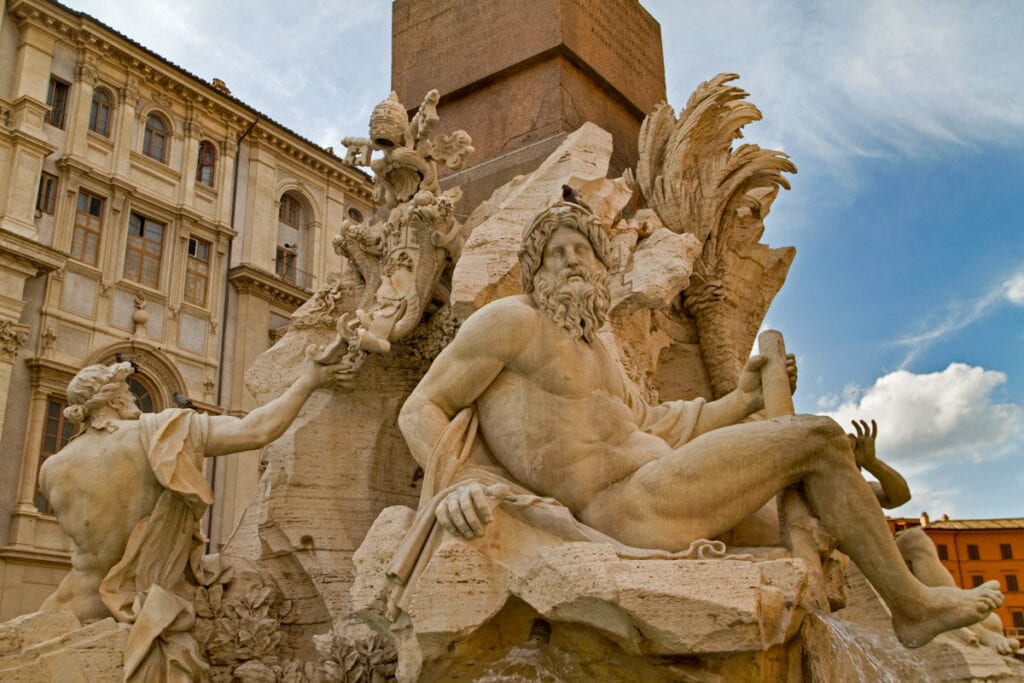
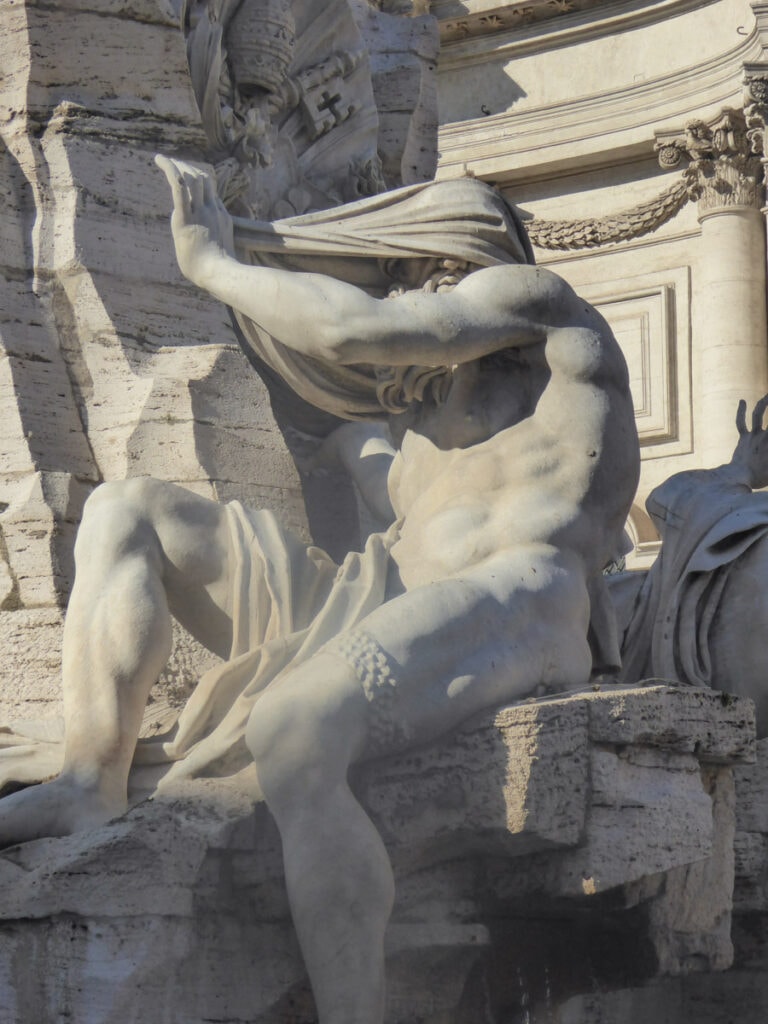
To the north is the Fountain of Neptune, and to the south, La Fontana del Moro.
The church of Sant’Agnese in Agone, which overlooks the square. was designed by Francesco Borromini.
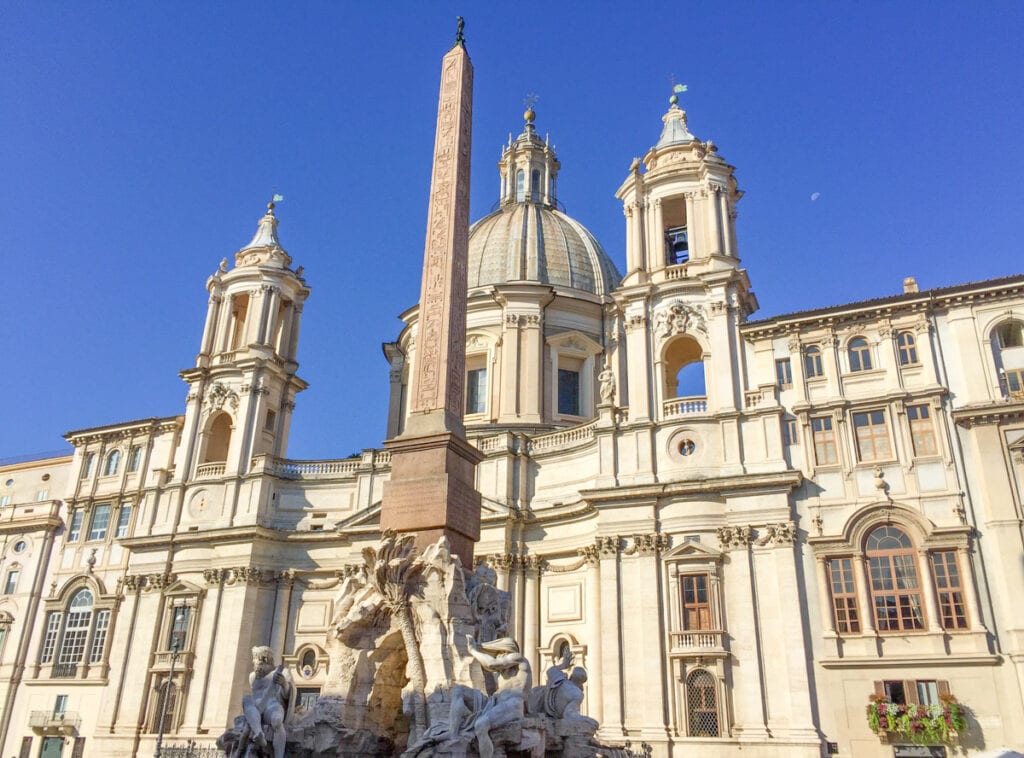
Today, Piazza Navona, which has featured in many movies, offers a lively ambience and is fun for both locals and visitors.
On the periphery are many cafes and restaurants, if you want to have a drink as you people watch and enjoy all the happenings in the plaza, from street performers to vendors. Don’t eat here, though, as many of the restaurants here are tourist traps.
Enjoy the plaza both during the day and after dark, when the fountains and buildings are illuminated.
The plaza hosts fairs through the year, and the Christmas Market held each December, to sell cribs and toys for the Feast of Epiphany, is especially popular.
10. See Moses at the BASILICA DI SAN PIETRO IN VINCOLI
On our first visit to Rome, we stepped inside the Basilica di San Pietro in Vincoli for Michelangelo’s Moses and the stunning ceiling.
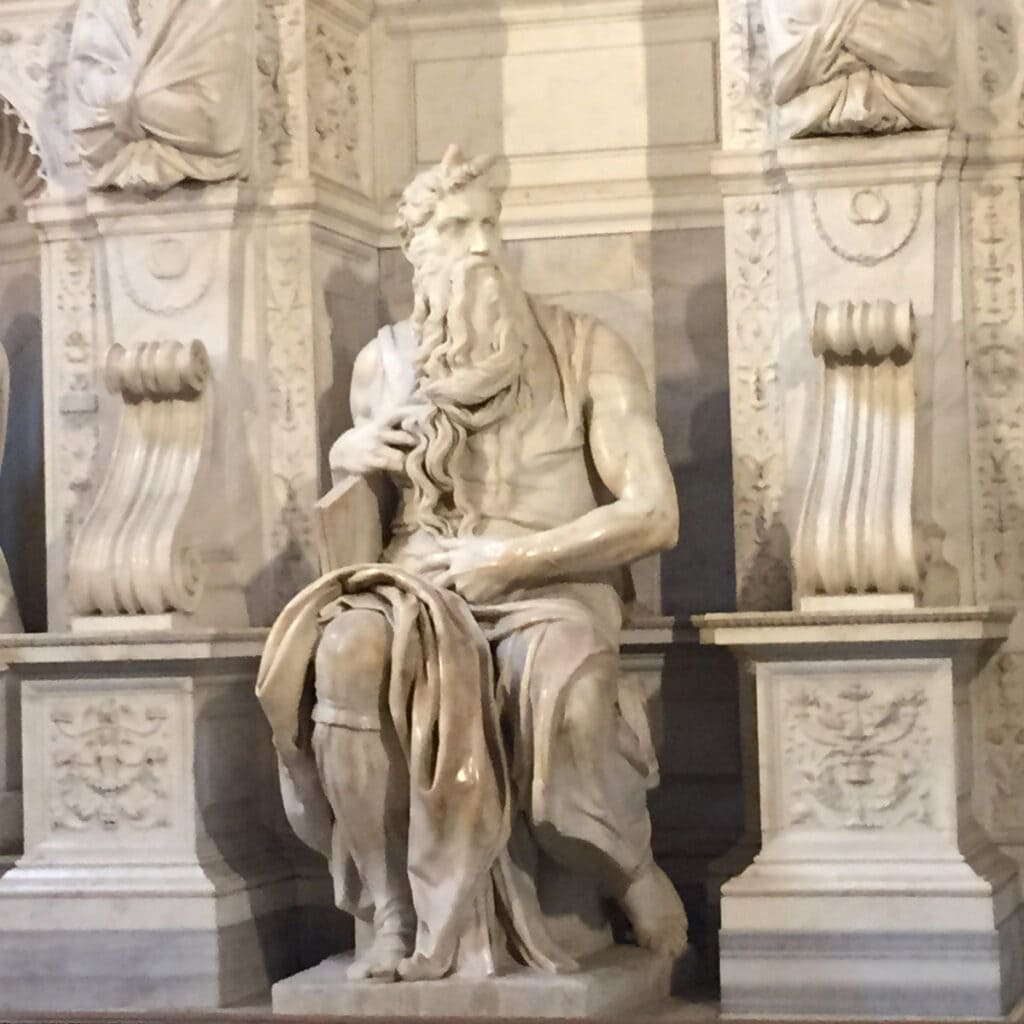
Moses is sculpted with horns!
Every detail is perfection: the beard, the folds of the robe, the fire in the eyes, and the right arm clutching the tablet.
The statue was sculpted in 1515 for the tomb of Pope Julius II.
The Basilica di San Pietro in Vincoli was built to house the chains that bound Saint Peter when he was imprisoned, first in Jerusalem and then in Rome.
The coffered ceiling is gorgeous, with a central fresco that depicts the Miracle of the Chains.
There are other works of art to admire in the church as well.
11. Admire the ARCIBASILICA DI SAN GIOVANNI IN LATERANO
The Basilica di San Giovanni in Laterano wowed me with its beautiful interior, huge organ, and dazzling ceiling.
This basilica is the church-cathedral of Rome and the official seat of the Bishop of Rome, the Pope.
It is also the oldest church structure in Rome, having originally been built in the year 313. Not much is left of the original building, though.
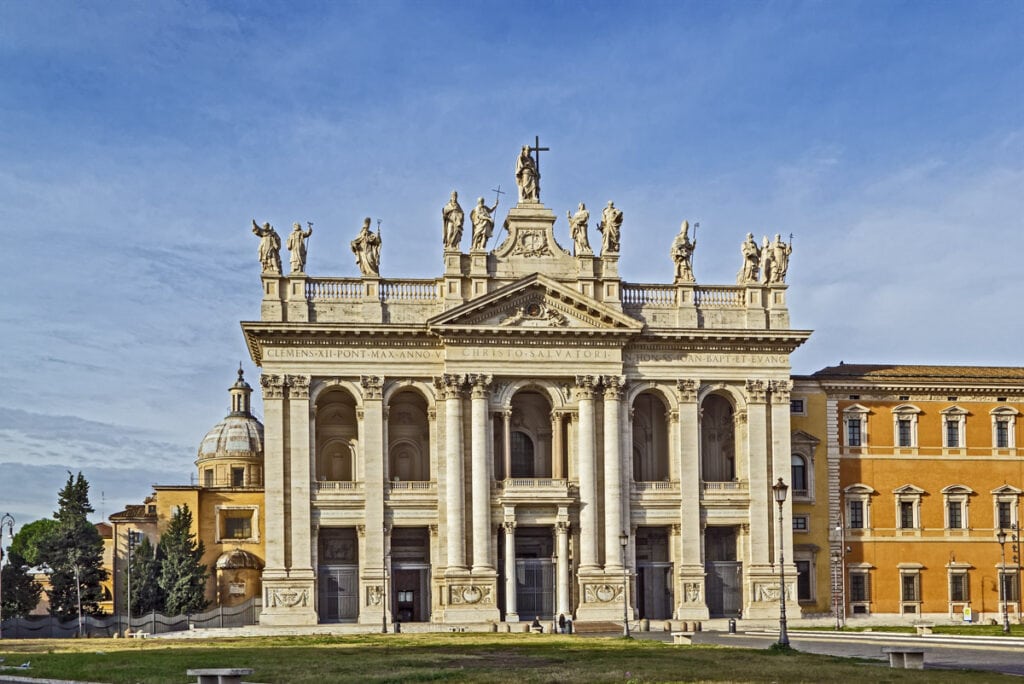
The Pope used to reside here until the 14th century, when the papal residence was moved to Avignon and then to the Vatican.
The current Baroque design is by Borromini, one of Rome’s famous architects.
One of the most significant things to see here is the cedar table that was reportedly the one used for Christ’s Last Supper. You will find it in the Altar of the Holy Sacrament.
The ceiling and the papal altar are both stunning.
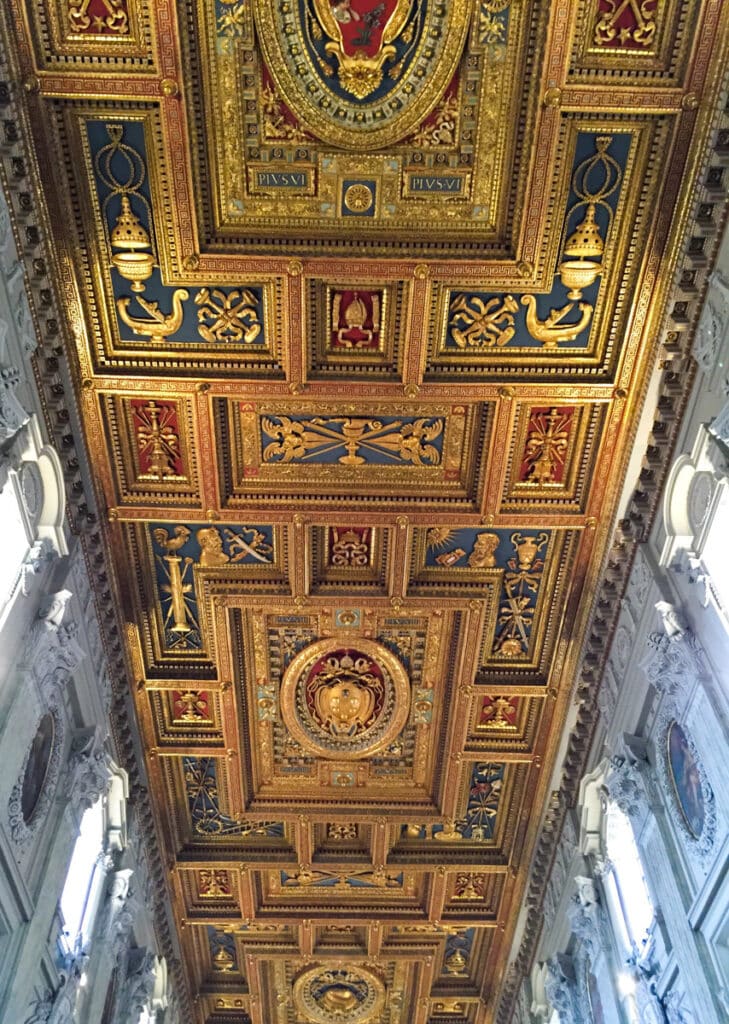
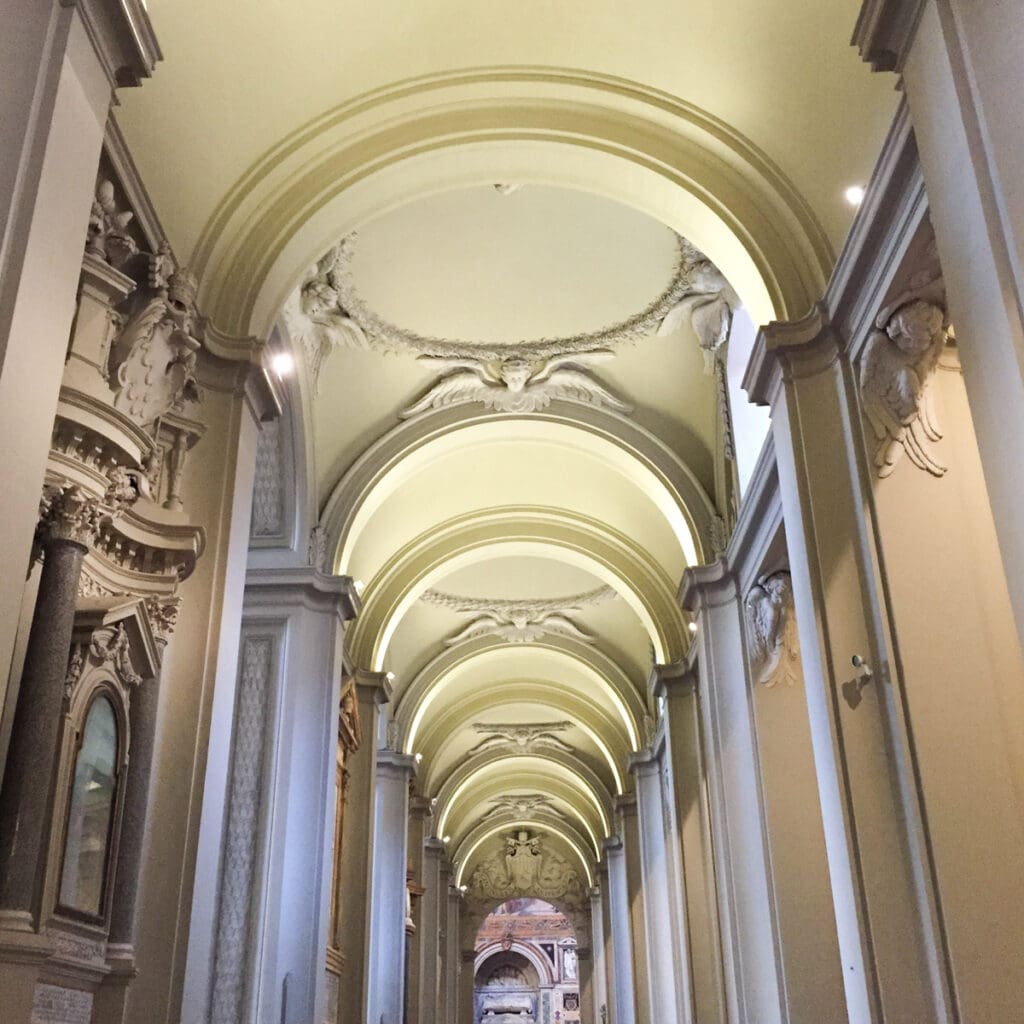
The square in front of the church has a large obelisk, said to be one of the oldest obelisks in Rome.
We walked to the Basilica di San Giovanni in Laterano, but you can also arrive here by metro. It’s a little ways out of the core of the historic center.
The Basilica is free to enter, but there is a small fee for the cloister.
12. Find Caravaggio’s art in churches
Caravaggio was one of the top Italian artists of the 17th century. He is known for his use of chiaroscuro, the Renaissance Italian oil painting technique known for its contrast between light and dark.
If you enjoy the art of Caravaggio, you’ll be excited to know that you can view some of his works for free in Rome’s churches.
You’ll also of course want to visit the Borghese Gallery and the Capitoline Museums to see several of Caravaggio’s well-known works.
To see his striking masterpieces featuring St. Matthew, head to the Church of S. Luigi dei Francesi in the historic center.
The trio of works, painted between 1599 and 1602, are The Calling of St. Matthew, The Martyrdom of St. Matthew, and St. Matthew and the Angel.
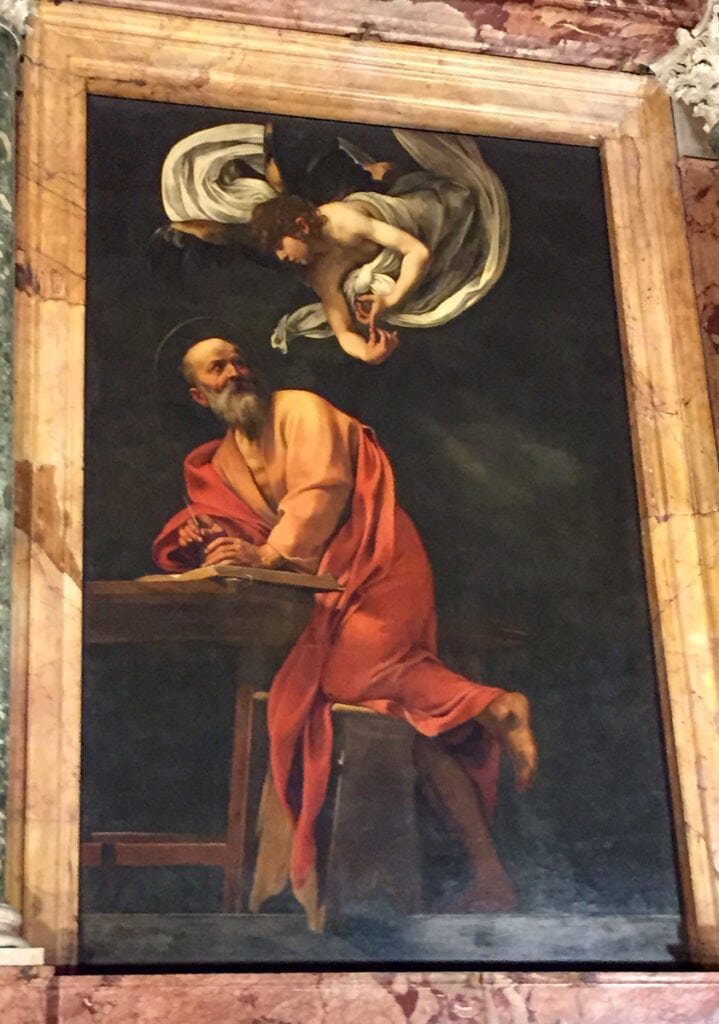
To see two more Caravaggio masterpieces, step inside the Basilica of Santa Maria del Popolo in the Piazza del Popolo.
The two paintings, the Crucifixion of St. Peter and the Conversion of St. Paul, can be seen for free.
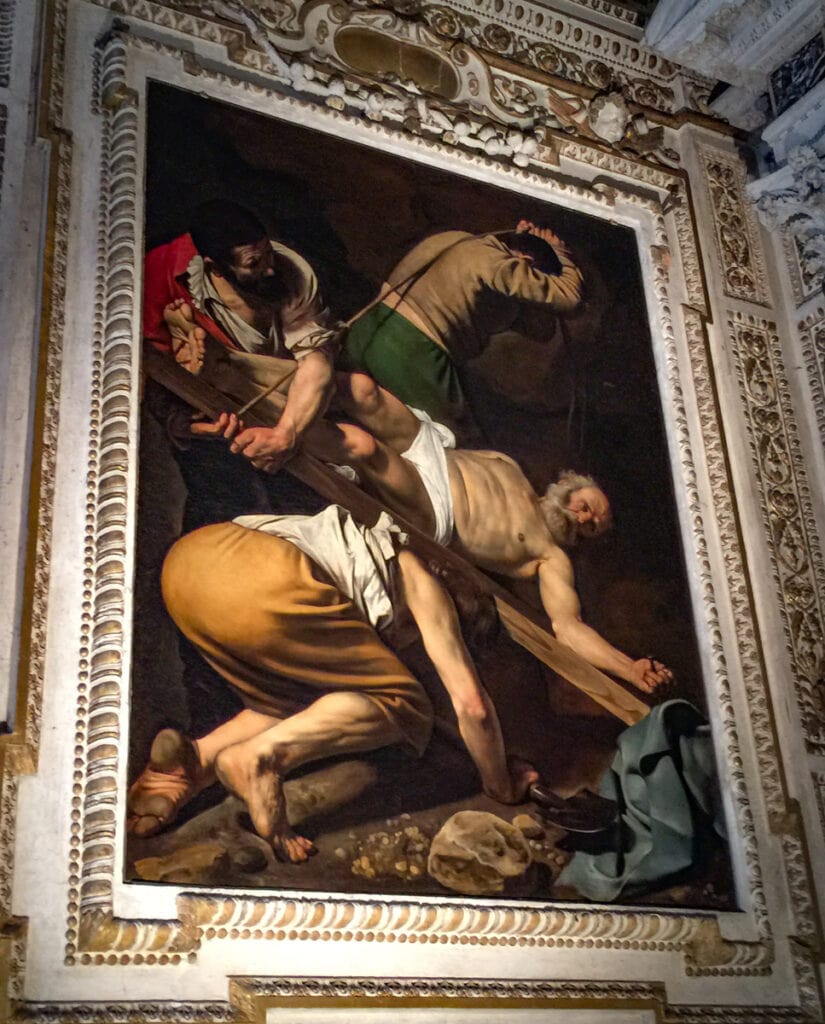
And at the Basilica di Sant Agostino near the Piazza Navona, be sure to take in the beauty of Caravaggio’s Pilgrim’s Madonna (also known as the Madonna di Loreto).
13. Visit the morning market at Campo de’ Fiori
Start your day in Rome right with a visit to the Campo de’ Fiori morning market next to the Piazza Navona.

Campo de’ Fiori translates to “Field of Flowers,” from an earlier time when the area was a meadow. But it’s an apt name for a square that hosts a fresh market.
You’ll find a statue of the philosopher Giordano Bruno in the square. He was burned at the stake here in 1600 for heresy.
At the open-air market, you’ll find fresh flowers, vegetables, fruit, cheeses, pasta, truffles, and olive oils and balsamic vinegar.
If you plan to stay in an apartment and cook some of your meals, this market is a great place to pick up produce, pasta and more.
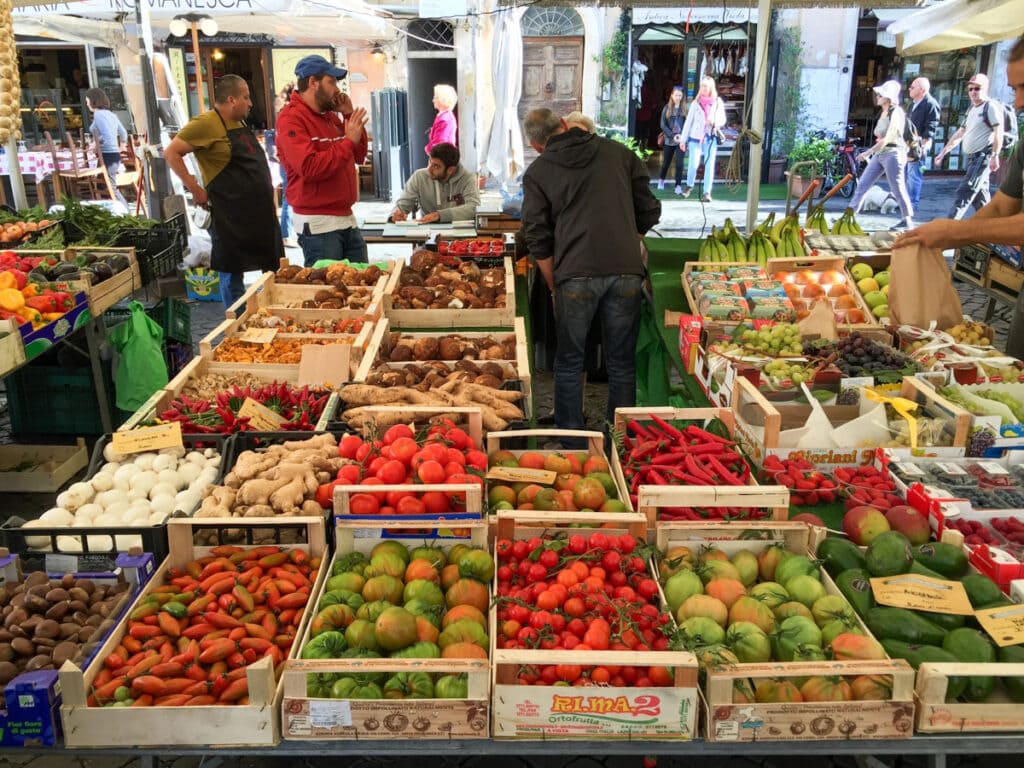
We had freshly squeezed fruit juice, which was simply delicious, before picking up some cheese, fresh and dried fruit, and nuts for our stay.
The market is held every morning except on Sundays.
After the market packs up (usually in the early afternoon), the cafes and restaurants that line the square start setting up for the evening.
If you plan to do a food tour while you are in Rome, Campo de’ Fiori may be the meeting point, or one of the stops on your tour.
14. Relax at the Piazza del Popolo
The People’s Square, Piazza del Popolo, is a great place to relax and people watch.
The large oval square has several beautiful churches along its periphery.
While not exact copies, two of the churches look quite similar, their domes making for a great photo op. They are located on either side of the Via del Corso, which leads out from the square.
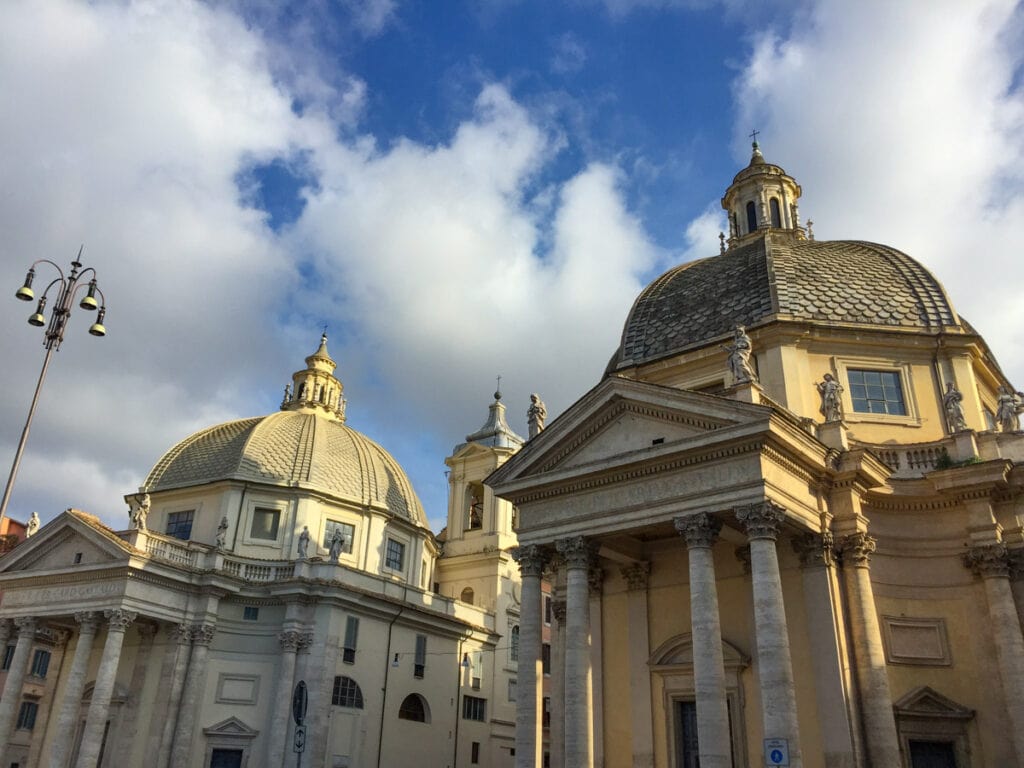
On the other side of the square is the Basilica Santa Maria del Popolo, home to two Caravaggio masterpieces, and a gorgeous chapel with mosaics, designed by Raphael.
On the periphery of the square you’ll also find the impressive city gate. There are fountains embedded into two walls of the square.
In the center is the gorgeous Egyptian obelisk, which was brought here from the Sun Temple in Heliopolis.
Steps lead up from the square to the Pincio Terrace, from where you can look down into the square!
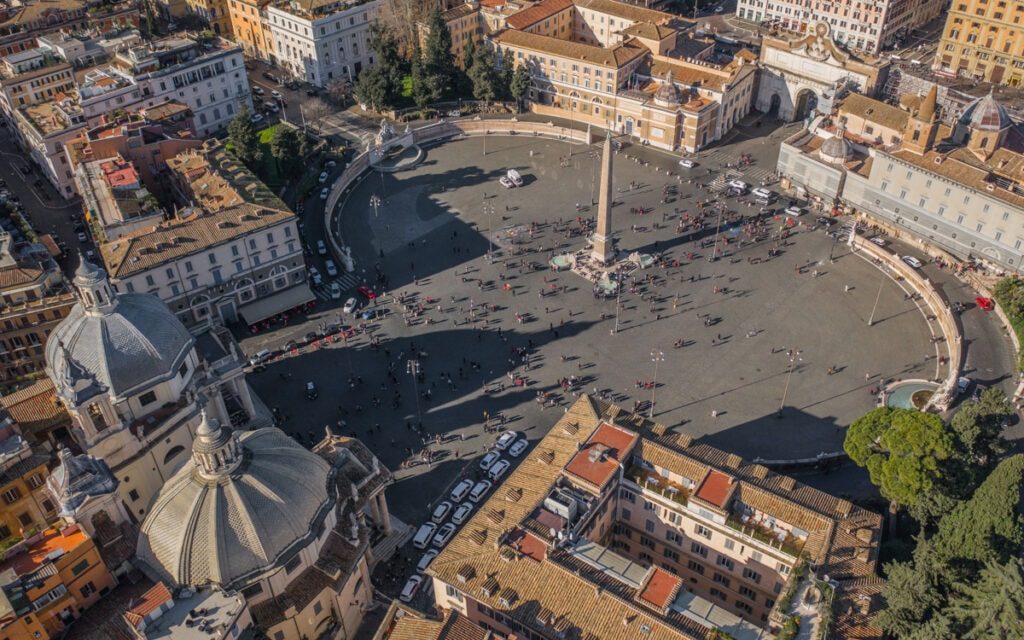
Stroll the square to admire the architecture and the monuments, enjoy the lively ambience and the street musicians, and take in the view from the terrace at sunset.
15. Check out a Bernini masterpiece at the Church of Santa Maria della Vittoria
In the Comaro Chapel of the Church of Santa Maria della Vittoria, you can view one of Bernini’s masterpieces for free!
If there’s only one piece of free art in Rome’s churches you have the time to see, make it this one.
The Ecstasy of Santa Teresa is considered one of the top works of the High Roman Baroque era.

Created from white marble, the sculpture shows Santa Teresa lying on a cloud in a state of rapture as an angel stands over her, about to pierce her with a golden spear.
Bernini also designed the chapel, the setting for his work. Colored marble surrounds the pristine white sculpture, making for a dramatic sight.
The sculpture is ingeniously illuminated by natural light that streams in through a hidden window in the afternoon. That’s the ideal time to visit!
16. Stroll the Piazza del Campidoglio
One of the many squares in the historic heart of Rome well worth visiting, the Piazza del Campidoglio is located at the top of Capitoline Hill.
Around the square, also called the Capitoline Square, you’ll find Rome’s City Hall and the two palaces that house the Capitoline Museums.
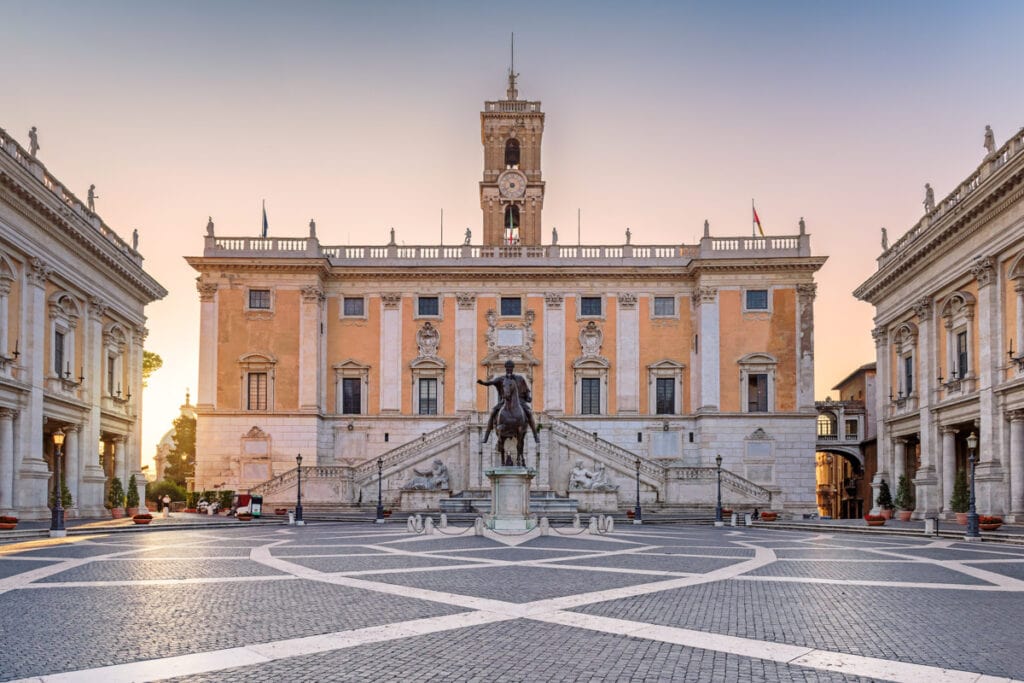
If you enjoy museums, the Capitoline Museums is where you’ll find the statue of the she-wolf suckling the babes that would be the founders of Rome, Romulus and Remus.
The Capitoline Museums do have a fee to enter (or you can opt for a guided tour), but the square is free and worth visiting in its own right.
The current Capitoline Square was designed by Michelangelo, the master Renaissance artist and architect.
The plaza is oval in shape and boasts an intricate spiral pavement with a twelve-point star in the center.
Michelangelo also designed new facades for the three buildings overlooking the square. He died before the square was complete.
The equestrian statue of Marcus Aurelius that graces the square is a copy: the original is in the Capitoline Museums.
17. Walk the Appian Way
The Appian Way is one of the important roads of ancient Rome, and you can still walk or bike it!
Exploring the Appian Way is definitely one of the coolest free things to do in Rome.
Used as a military supply artery in ancient times, the Via Appia Antica is quite well preserved.
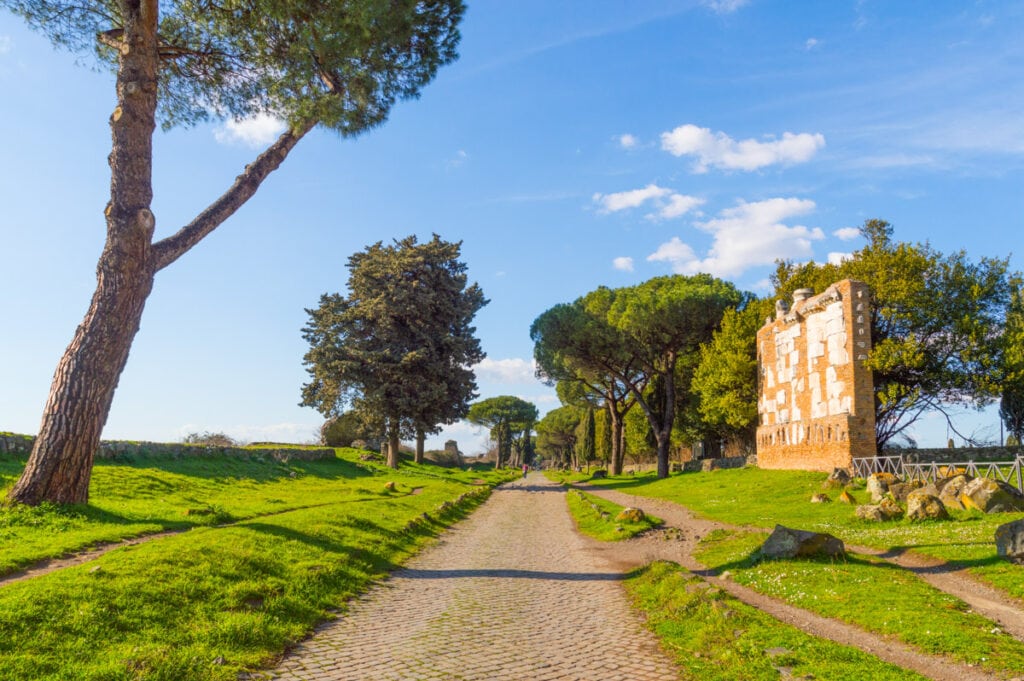
The road extended from Rome to Brindisi in Puglia, a distance of over 300 miles, and its construction in 312 B.C. is considered an impressive undertaking.
The cobbled road has a rich history. Christians buried their dead along this route, and Spartacus was crucified here.
The first ten miles of the Appian Way are now a regional park. On Sundays, the street is closed to traffic and it’s the ideal day to hike the road or bike it.
To get here, take the metro to the Circo Massimo stop, then catch the number 118 bus, which runs about every 40 minutes.
Note that although the Appian Way is free to explore, the catacombs at the Appian Way have an entrance fee.
18. Gawk at the Quartiere Coppede
For a look at a surprising architectural complex, visit the Quartiere Coppedè!
A somewhat hidden gem not too far from the historic center of Rome, this residential neighborhood makes for fabulous photos.
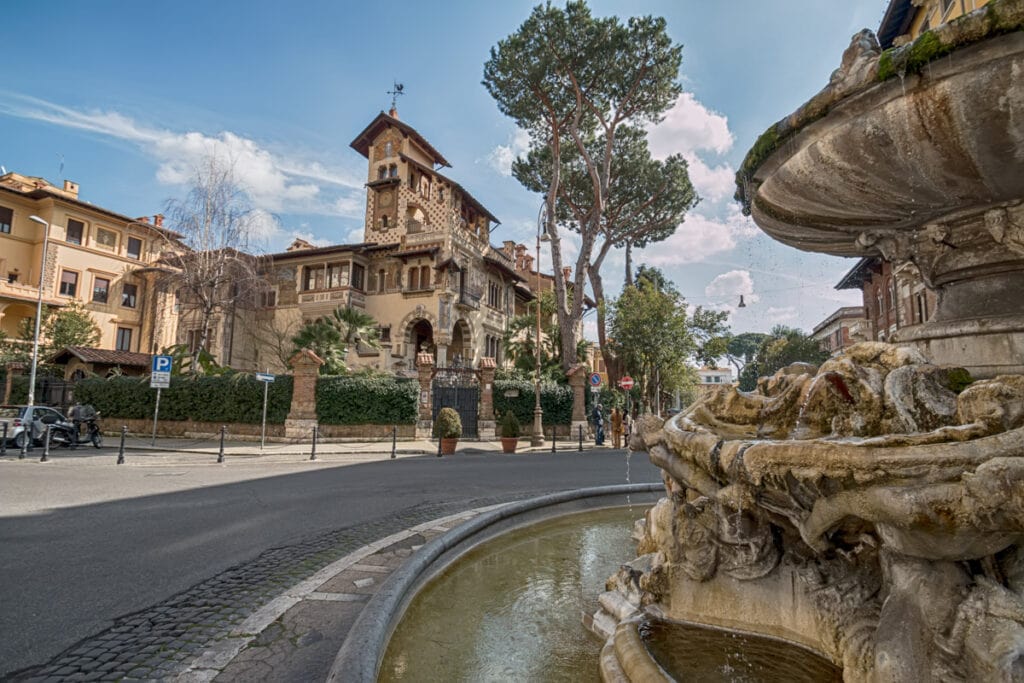
From Art Nouveau to Baroque, Ancient Greek, and many other styles, the complex of buildings was the brainchild of Gino Coppedè, a Florentine architect and sculptor.
The complex was built between 1913 and 1927. There are about 40 structures you can admire here, so allow for enough time!
The entrance features a stunning arch with a large chandelier.
Don’t miss the Fountain of the Frogs, which also features a bee in honor of Bernini’s Fountain of the Bees.
The Palazzina del Ragno has an enormous spider on its facade, and the Villino delle Fate features the signature symbols of Florence, Venice, and Rome.
We loved our stroll through this lovely quarter. If you have the time, don’t miss walking through the Quartiere Coppedè!
To visit, take bus number 86 or 92 and alight at the Piazza Buenos Aires. You’ll find the entrance to Quartiere Coppedè at the corner of Via Arno and Via Tagliamento.
19. Enjoy sunset at the Gianicolo Terrace
Janiculum Hill is one of the best viewpoints in Rome and offers a panoramic view of the Eternal City.
A wonderful spot at both sunrise and sunset, the Piazza Giuseppe Garibaldi at the top of the hill can be reached on foot or by bus number 115.
We visited at sunset and loved seeing the rays of the setting sun paint the facades and rooftops of Rome in warm oranges, reds, and pinks.
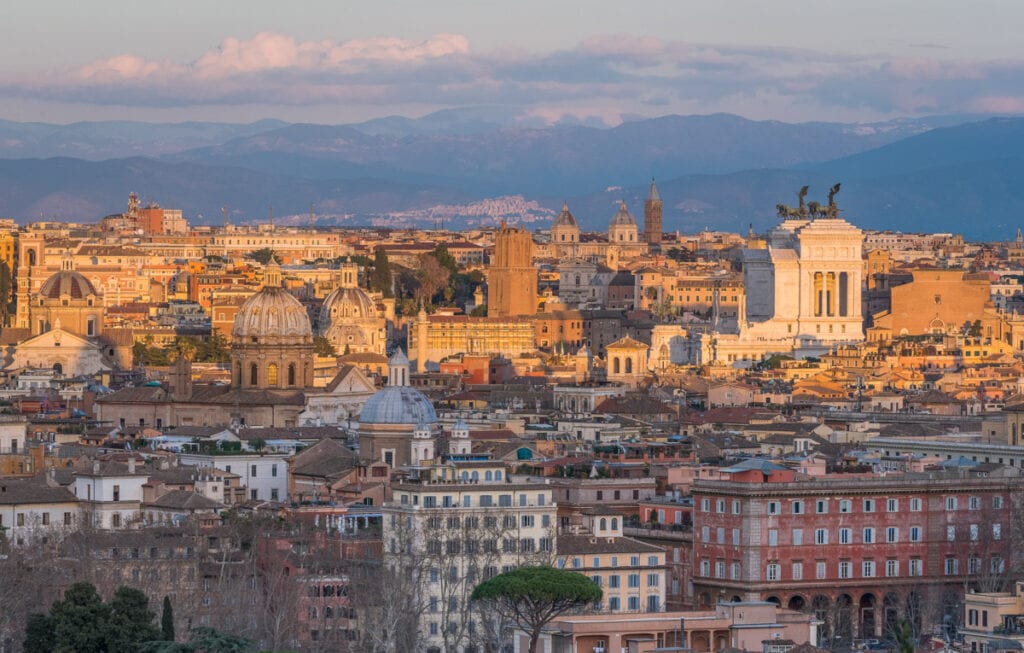
Look for the Pantheon, the dome of Saint Peter’s Basilica, the Altare alla Patria, and other prominent Rome landmarks.
Admire the monument to Garibaldi in the center of the plaza.
With live music and food trucks, the piazza makes for a fun visit. A cannon is shot at noon.
20. And stop at Bramante’s Tempietto
Even if you took the bus up to the top of Janiculum Hill, you’ll want to walk down, to take in the sights along the way.
Possibly the most famous sight is Bramante’s Tempietto, a small temple that stands in the plaza of the Church of San Pietro in Montorio.
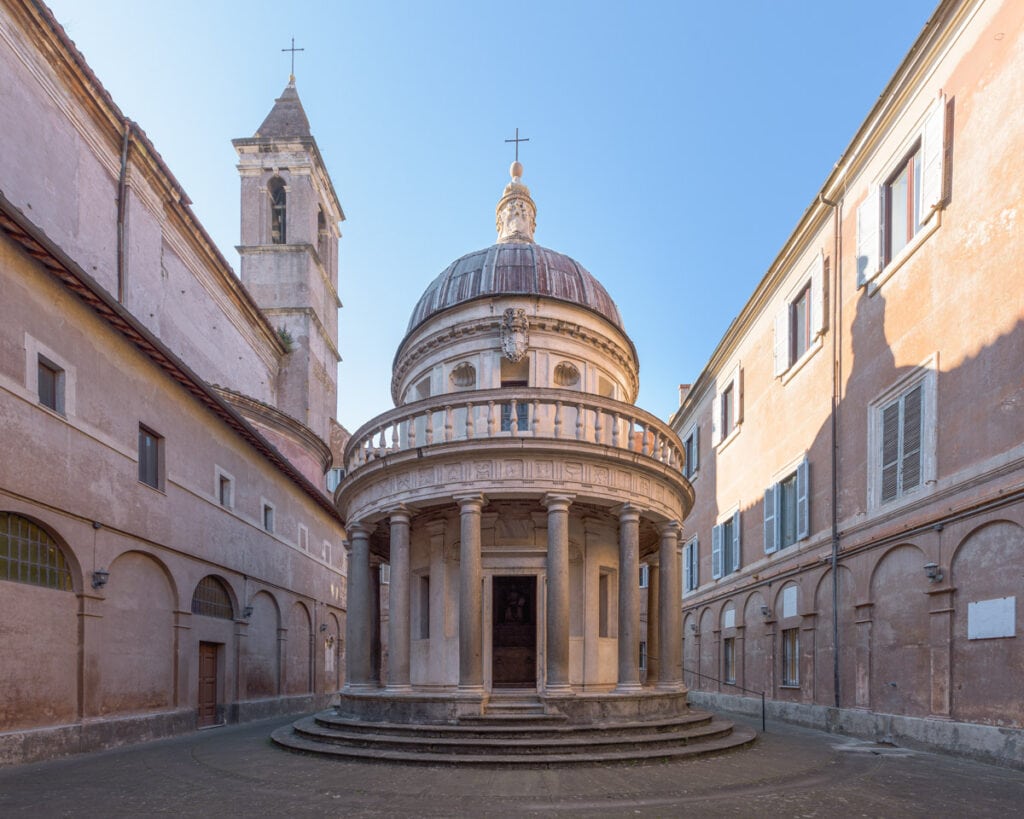
The Reniasance temple is exquisite, featuring a single chamber, a beautiful dome, and an elegant ring of columns around the body.
The Church of San Pietro is also worth visiting. It is said to be built on the spot where Saint Peter was crucified.
The 15th century church boasts lovely frescoes and a chapel designed by Bernini.
Also along the route, do not miss the Fontana dell’Acqua Paola, a Baroque monumental fountain located near the church.
21. Peek through the Aventine Keyhole
The view through the Aventine Keyhole is one of the most popular views in Rome, so expect lots of other people trying to get the perfect photo here.
But it’s a free attraction that’s not to be missed if you enjoy taking unique photos!
Put your eye to the keyhole and you’ll have the most unique view of the dome of Saint Peter’s, framed by the keyhole and the hedges of a formal garden.
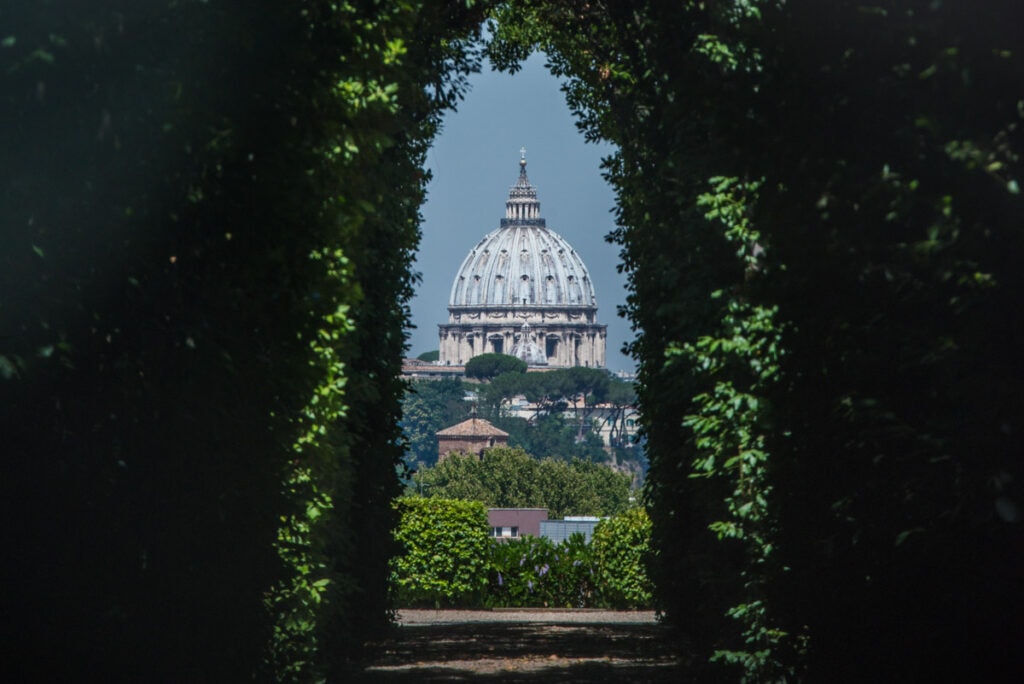
The Aventine Keyhole is located at the top of the Aventine Hill, one of the seven hills on which Rome was built.
The keyhole is in a door on the property of the Knights of Malta. The address is Piazza dei Cavalieri di Malta 3, 00153 Rome.
Take a metro to the Circo Massimo station and then walk up the hill to the piazza.
22. Admire the Column of Marcus Aurelius
Located in the Piazza Colonna, right in the heart of the historic center of Rome, the Column of Marcus Aurelius is an awe-inspiring sight.
The Doric column was built to honor the Roman emperor Marcus Aurelius, and soars about 128 feet into the sky, even with some of the base submerged.
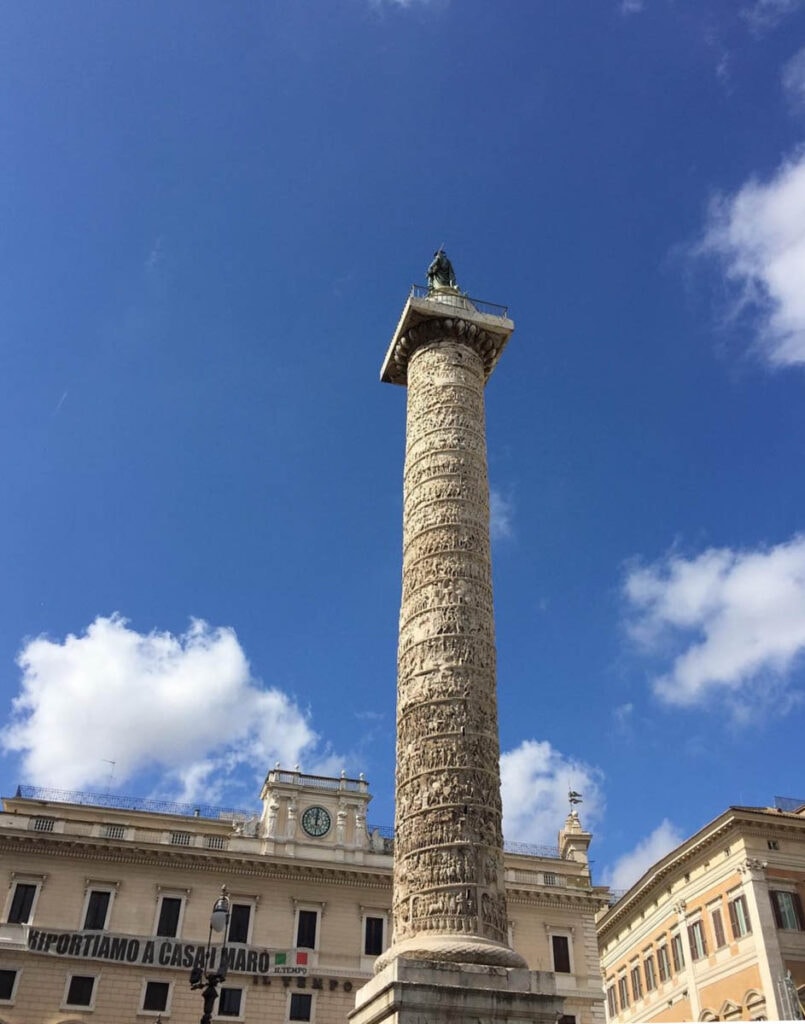
Made of multiple blocks of hollowed out Carrara marble, the column was constructed with a stairway inside, and tiny slits for illumination.
The column is decorated with an intricate spiral relief that depicts the Danubian wars waged against the Quadi by the emperor from the year 166 until his death.
You can’t access the staircase within the column, but you must stop to admire the intricacy of the relief on the column.
This column is said to have been inspired by Trajan’s Column, which you can see in Trajan’s Forum.
Did you find this article informative? Pin it for later reference!
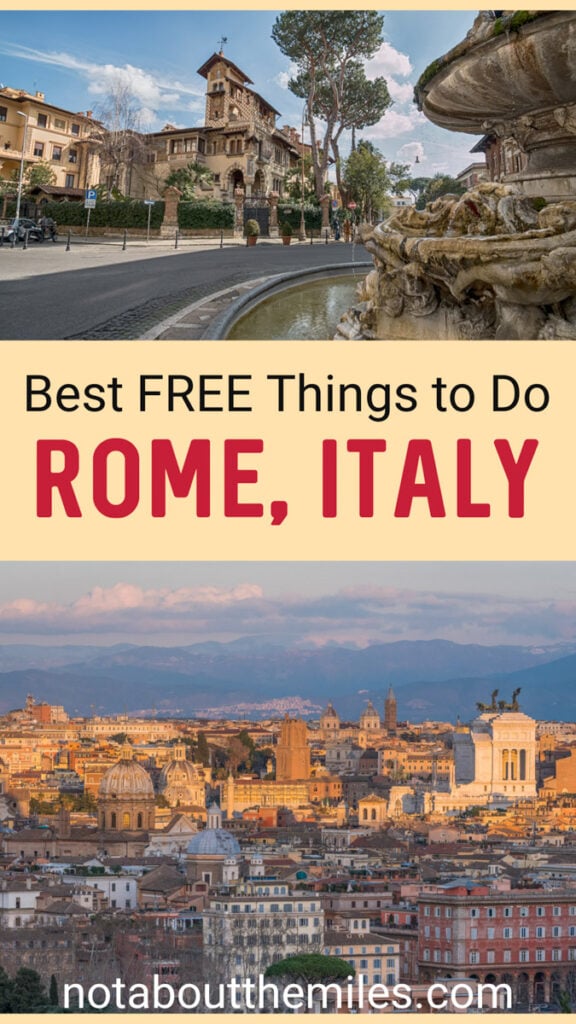

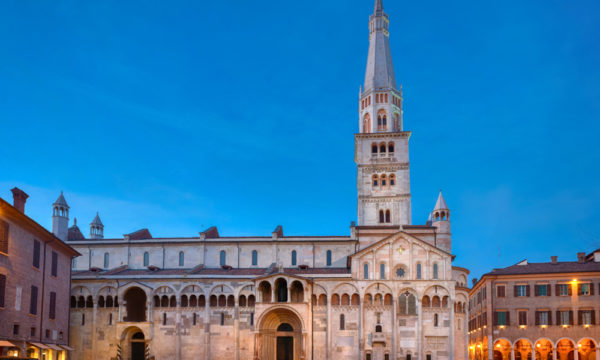
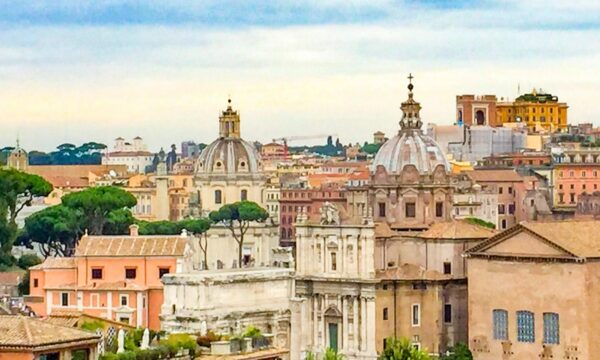

Oh you hit all my favorite churches! I love exploring the wonderful art in the eternal city and your list of the fabulous and free is terrific – the thing I didn’t manage to do was visit Campo di Fiori on market day although we saw it in the evening when we had dinner there. I’ve thrown a coin in the Trevi Fountain so I know I’ll be back! Great photos Dhara!
Thanks much Rebecca! The churches of Rome are definitely stunning, and these in particular are gems. Rome has so much to see and do that multiple visits are totally in order. We loved browsing the market and sampling the goodies…you will love it when you visit.
I love these suggestions! I’m currently planning a trip to Italy and would love some more tips!
Thanks much, Katie! You will love Italy. There are so many beautiful places to see!
Rome is one of my favorite cities in the world. It’s like going back in time and relive history. I also love Rome because it’s such a vibrant city. It’s been a while since I have been there and I should go visit it again asap. Thank you for the advice. I can’t wait to see Rome by night…
Thanks,Sarah! You will love Rome by night…the fountains and monuments look amazing all lit up.
Such lovely pictures and such an informative post, Dhara! I’ve always imagined Italy will be an expensive country, glad to bookmark these free spots!
Thank you, Sharanya. The free activities were a lot of fun!!!